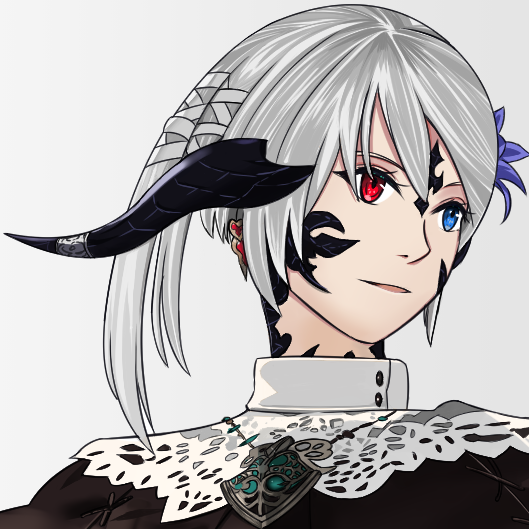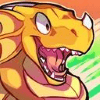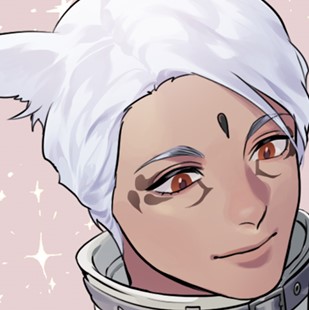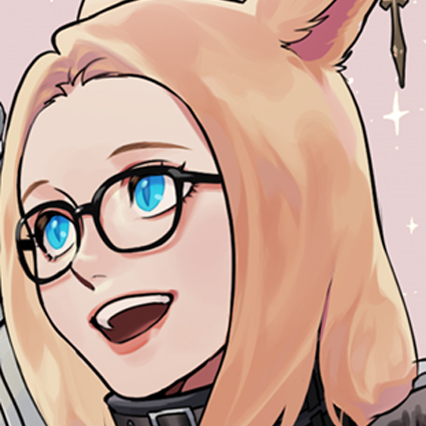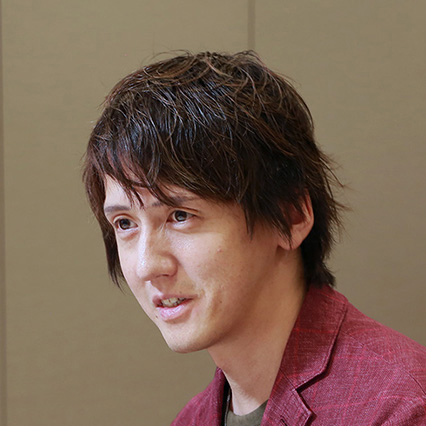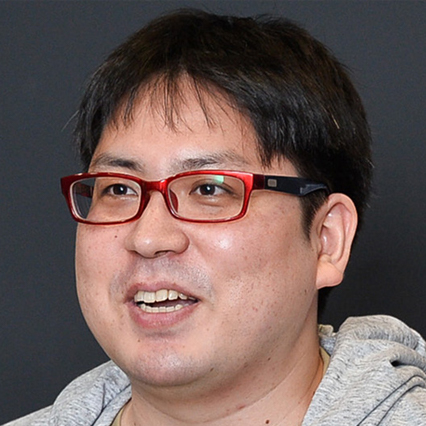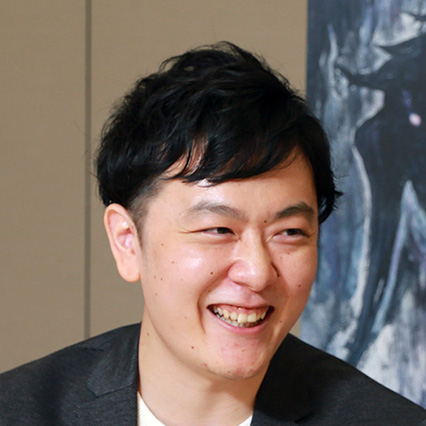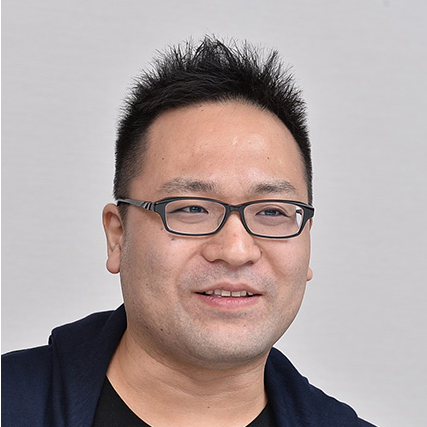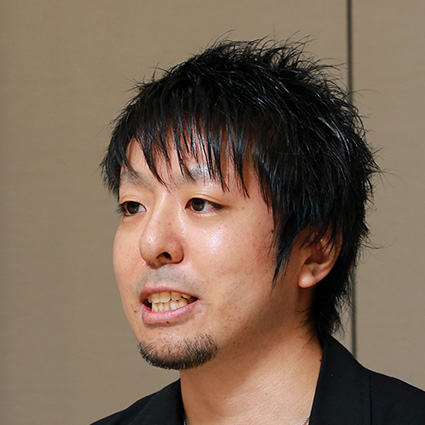Message From AkhMorning
As part of our vision for future content on AkhMorning we are looking to expand our horizons with coverage of various overseas media to bridge together the information between regions and to help enhance the global understanding and appreciation of FFXIV.
This article is our eleventh translation article of overseas interviews. It is unofficial and all rights to the source images, assets and written content belong to Famitsu and SQUARE ENIX CO., LTD. respectively.
For ease of legibility with the article’s length, the source media has been omitted but can be found in the official article link below.
If you have any feedback, please contact us at feedback@akhmorning.com.
It is with great pleasure we bring to you our translation of:
The Interview With Developers of “Eden’s Promise” (Part 2)
An In Depth Look Behind The Battles And How The Mechanics Came to be, Digging Deeper Into the Final Raid Tier!
Source Article
『FF14』”希望の園エデン:再生編”開発者インタビュー(後編)。バトルのコンセプトやあの印象的なギミックが生まれた秘話など、再生編の各層を深掘り!
Famitsu Article Staff
Part 1
- AkhMorning Translation: Famitsu: FanFest Dev Interview (1/1)
- Source: 【FF14】『暁月のフィナーレ』開発者インタビュー第2弾 魔法宮殿 グラン・コスモスに登場する騎士ついてのエピソードも
Continuing from the previous interview, Famitsu now presents the latter half of the interview on Eden’s Promise, a high level difficulty raid in Final Fantasy XIV (referred to as “FFXIV”), This interview will provide a deeper look at all the floors and their mechanics, and how it came to be.
Disclaimer: this interview was conducted with all safety measures and precautions taken in mind. This includes wearing masks outside of photoshoots, social distancing between members was practiced, along with measures to prevent infection being strictly adhered to.
Masaki Nakagawa
Lead Battle Content Designer.
In charge of the Eden series raid as the leader of the Monster team involved in the creation of battle content. Designs battle content in addition to team coordination, and was involved in the design for Eden’s Gate 2nd floor and Eden’s Verse 1st floor (planning). Referred to as as Nakagawa in this interview.
Seishirou Hata
Battle Content Designer.
In charge of Eden’s Promise 1st Floor. Referred to as Hata in the interview.
Banri Takahashi
Battle Content Designer.
Worked on Eden’s Verse 1st floor (Implementation, Adjustments). In charge of Eden’s Promise 2nd Floor. Referred to as Takahashi in the interview.
Takashi Kawamoto
Battle Systems Designer.
Worked on Eden’s Gate 1st floor. In charge of Eden’s Promise 3rd Floor. Referred toas Kawamoto in the interview.
Kazuto Yoshihashi
Battle Content Designer.
Worked on Eden’s Verse 3rd floor. In charge of Eden’s Promise 4th Floor. Referred to as Yoshihashi in the interview.
The Initial Composition Of “Empty Plane” Was A Battle That Took Place On The Clouds!
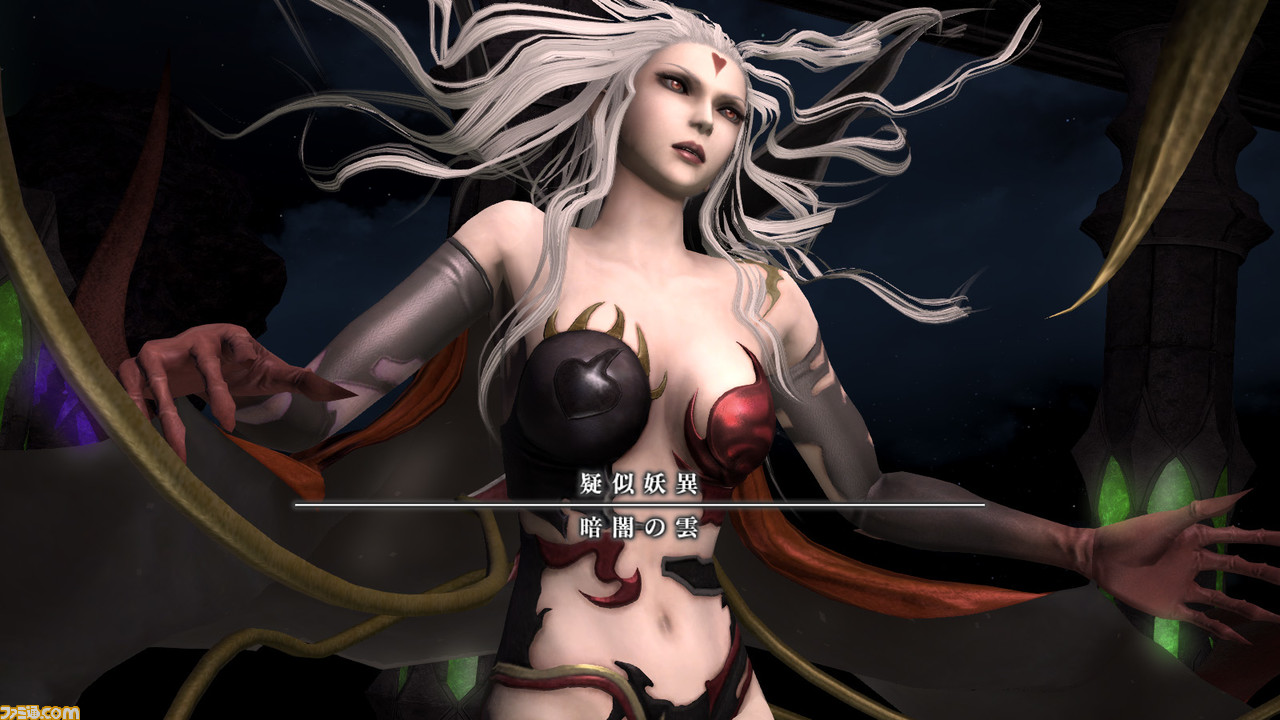
We’ll begin our interview with an in-depth look into each floor.
Let’s start with the First floor of Eden’s Promise, so I want to know how you proceeded with the project here?
When I was first given the title “The Cloud of Darkness” to work on, I thought that there was definitely a need for some elements that resemble the Cloud of Darkness which appeared in the World of Darkness Alliance Raid.
Also, the whole Eden series has the element of recreating enemies based on the (very vague) memories of the Warriors of Light, so I wanted to mix up those memories and create something that combined various elements, and that’s how I came up with the plan.
So from there, what kind of mechanics did you come up with in detail?
Since the name has the word “Cloud” in it, I thought we should work our plan to include “using some form of Clouds”. And that connects with what is currently known as “Empty Plane”.
There were small clouds that appeared on top of the squares during Empty Plane.
Was what you were referring to?
No, actually it’s not about those clouds.
During the Empty Plane, the field would change drastically. That field was initially conceived as a black cloud… Players would then ride on the clouds to fight, but staying on the same spot, or having other players stack on you would cause the platform to disappear and the player to fall to their deaths.
However, after various discussions with the artists, to make the field look like clouds would require the addition of semi-transparency texturing to things like the character’s hair and clouds, which would severely increase processing load, so we had no choice but to discard the idea.
We thought of an alternative but interesting idea, which is to allow platforms to disappear through the passage of time and the concept of weight. So with that we retained that part of our initial idea, and thus became the Empty Plane you see today.
Visually, the image of clouds wasn’t possible to realise, but the idea did indeed come from there. This is where the plan for the first floor of Eden’s Promise first floor started.
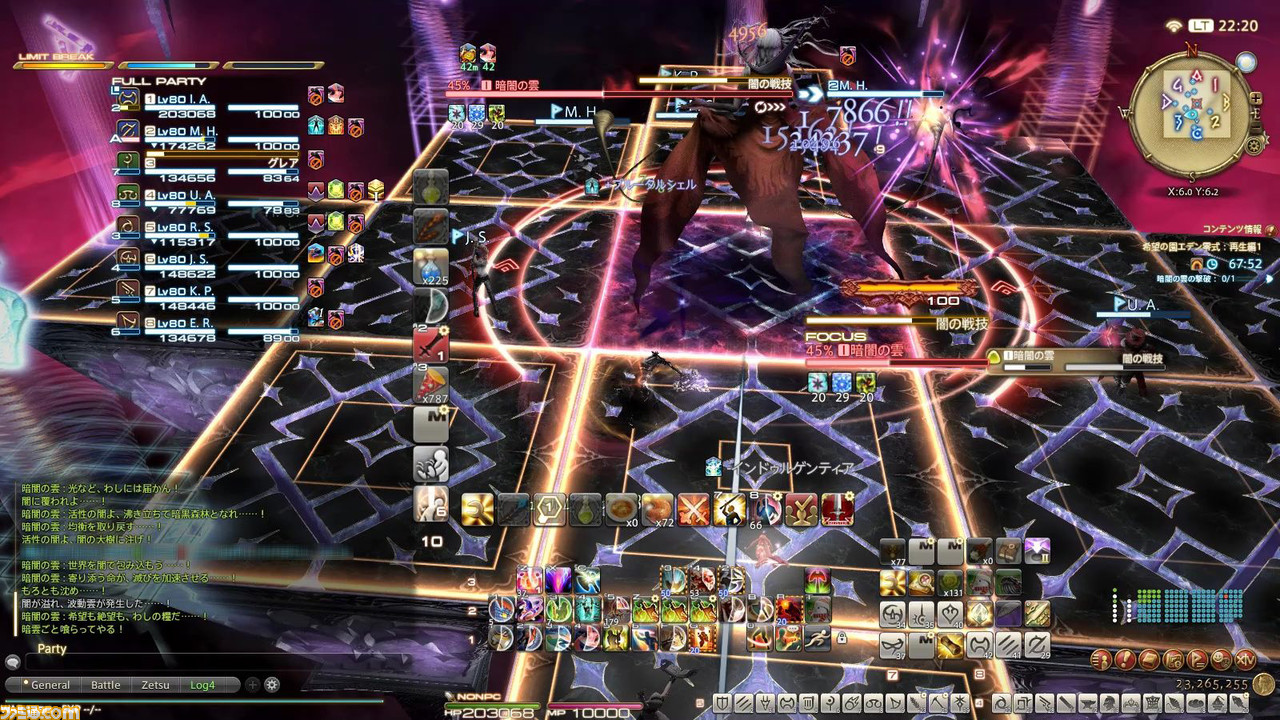
The most impactful mechanic of floors disappearing seen on the First floor was conceived first.
So, how did you build up the overall content from there?
We have 2 concepts for this.
The first is “the World of Darkness world tour,” starting with the World of Darkness. To begin with, the Cloud of Darkness is an existence that stands at the apex of the underworld void, so if the Cloud of Darkness were to be summoned, the surroundings will be affected by the void as well. This became the base idea so it led to me filling the idea of changing the field as I’ve mentioned earlier.
Also, since there are various environments even in the void, and by using “World of Darkness” or “Void Ark”, the stages where players have challenged the Void in the past as reference, and through integrating the elements of plant-like monsters into this stage, the Forest of Darkness was created.
Furthermore, by creating a total of 3 scenes of a divine shrine-like field that fits well with the image of the World of Darkness, the battle is then created to revolve around that. That’s the image I had when working on this stage.
I see.
So that plant was the result of the influence brought by the Void.
Yes. And then there is another concept at play, which is the part where players are “to make decisions through looking at Cloud of Darkness.”
I also worked on implementing elements of having to look closely at the boss and decide on how to dodge her skills in order to bring out the definitive feel of fighting with the Cloud of Darkness instead of only putting in animation scenes that revolve around the Void.
This concept itself is then connected to the memory elements that I’ve mentioned earlier on - the memories of facing the boss “Scathach” from Dun Scaith where she unleashed a hand-like shadow that grows on her back and dealing with her attacks ended up mixing up with the Cloud of Darkness… and so the relation of having to make decisions by looking at the boss is formed.
This is how we came up with skills like “Art of Darkness,” “Phaser Unlimited” and so on.
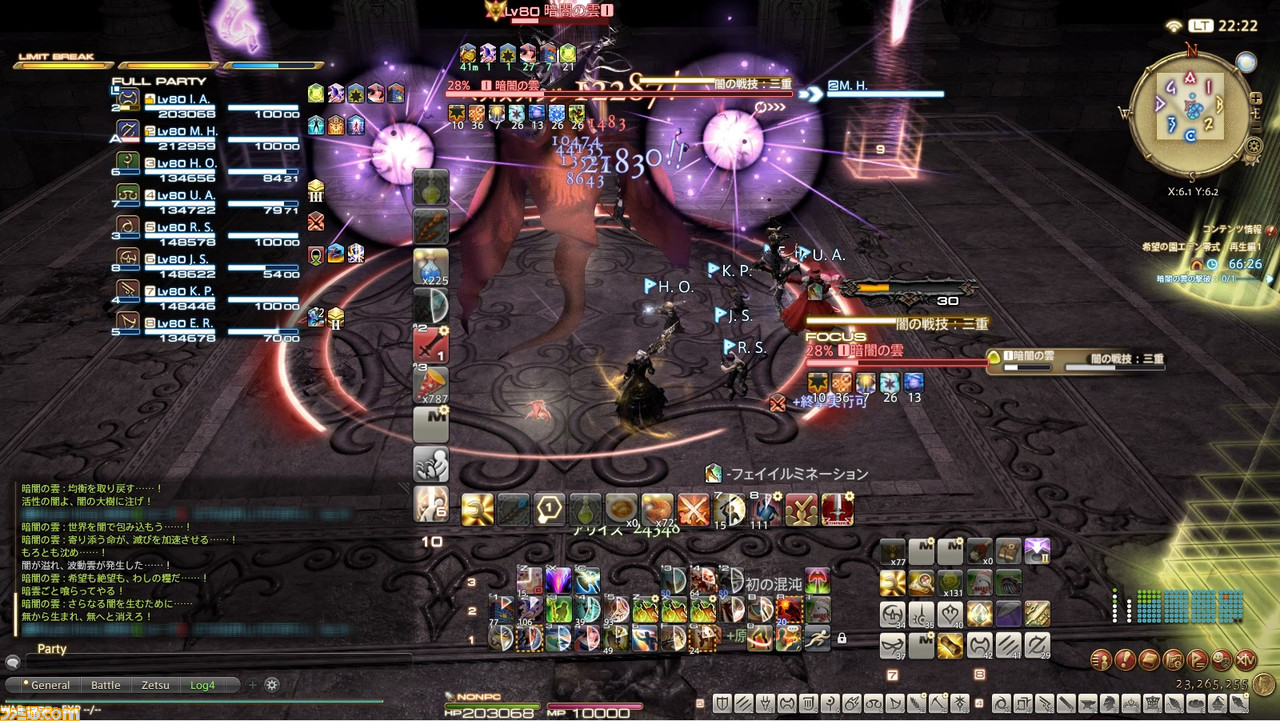
Makes sense. Now that you mention it, the Void elements can indeed be seen everywhere.
Among the mechanics seen on the first floor I do think the Empty Plane phase is one that stands out from the rest.
We somewhat settled on it after many trials and errors, but actually the Empty Plane phase was much more difficult during the initial development phase.
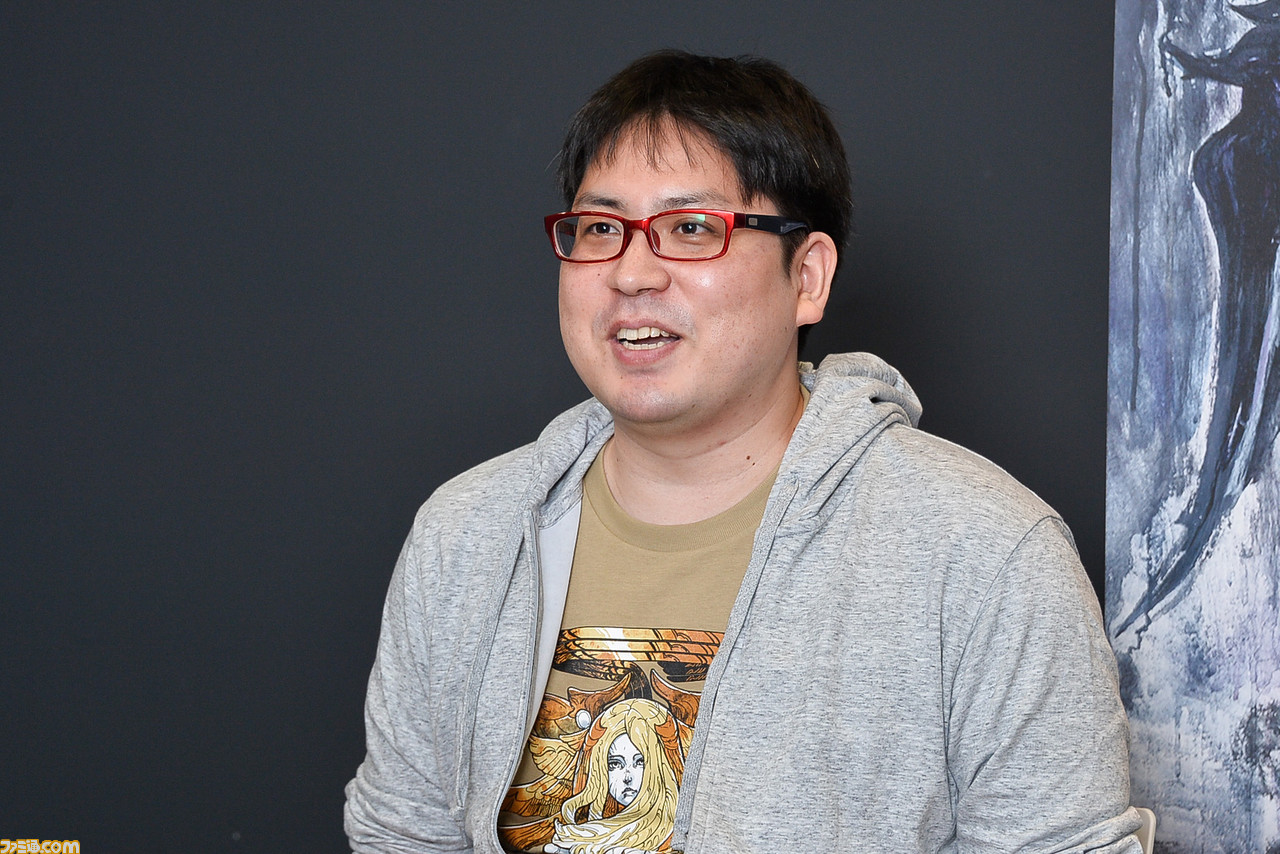
Please fill us with the details. (laughs)
Art of Darkness would be unleashed halfway through the Empty Plane phase.
The part where all players have to be careful about stacking on panels and move to the safe spots since the boss would cleave through half of the arena.
That’s right.
During the 2nd Empty Plane phase, the initial setup was that it didn’t just include the Art of Darkness, but The Second Art of Darkness would be unleashed as well.
Therefore, we initially wanted the players to first avoid the attack by moving to the other half of the field, and furthermore had to decide whether to spread out from the spot players avoided or group up in pairs in order to resolve the mechanic and the difficulty was quite high.
Considering that it’s still the first floor we adjusted the second Empty Plane phase to be ultimately the same as the first and left it there.
That’s certainly not an appropriate difficulty level for a first floor. (laughs)
Although this was mentioned in the behind the scenes production before too, it is harder to increase the difficulty later on, so I guess that’s why you set the difficulty level overly high from the beginning.
Yes.
This was discussed before but adjusting the content to be more difficult later after finding it to be insufficient will cause some issues due to the cost in graphic resources, so it’s hard to do.
Therefore we create our content to be somewhat packed in volume and difficulty during the planning phase, and from there we perform play tests to decide whether to trim it down, and that’s how we do things.
The Empty Plane phase is a mechanic where other player’s movement determines whether it can be resolved successfully or not, so while it’s fulfilling to accomplish, it comes with a lot of stress as well.
It would be nice if all 8 players in the party know each other and they can have great fun with it, but that’s easier said than done… therefore this is the phase where the difficulty gets drastically reduced.
With the Empty Plane Phase’s, even today there’s still quite some ruckus made between friends in voice chat, where names keep getting called to ask them to move to the safe spots. (laughs)
This happened during our test play too, and I remember having to scream Nakagawa’s name various times throughout.
Although it wasn’t actually Nakagawa’s fault, but someone else who was on the inside. (laughs)
“It’s not me, it’s the inside one that’s blocked!” I reckon. (laughs)
It’s a mechanic that’s not seen before, so it really felt fresh. When it comes to difficult mechanics, the Rejuvenating Balm and The Second Art of Darkness combo was quite a hard one to go through.
Did you leave this untouched for the sake of making it more challenging?
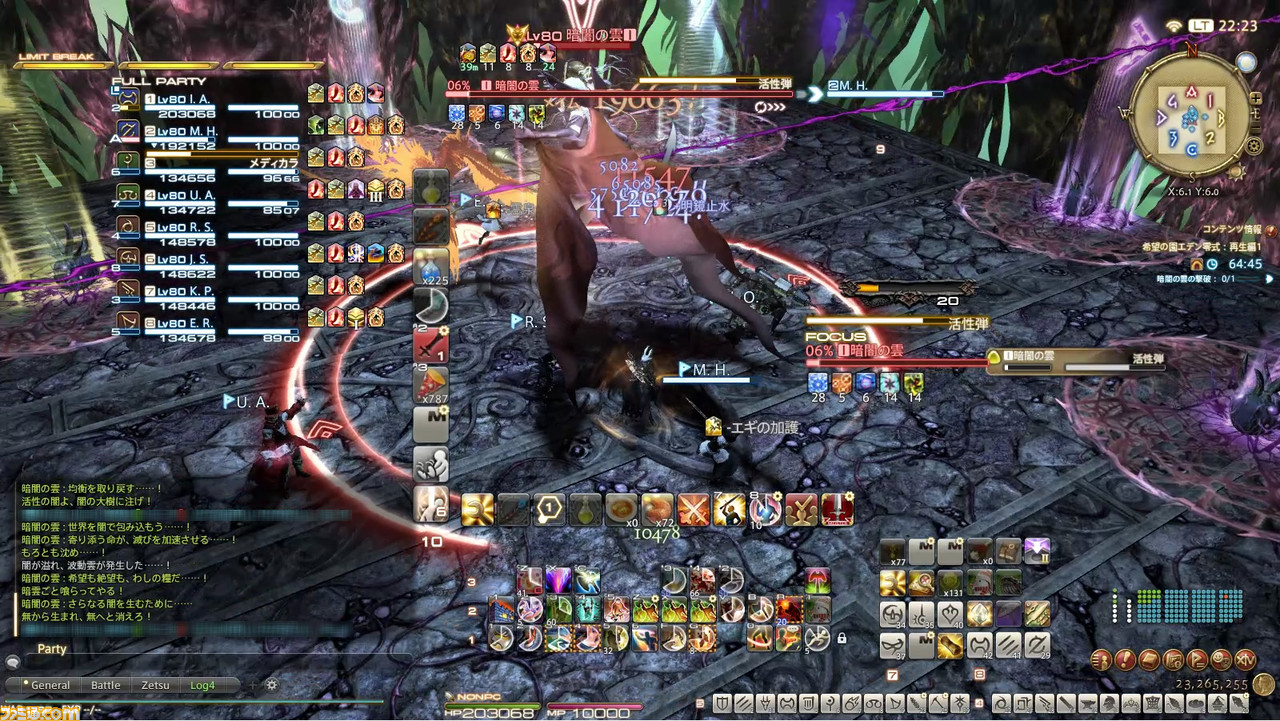
That’s right.
The concept of the Obscure Woods phase here would be the tentacles that came out of Cloud of Darkness as well as utilising the plants located outside the stage and to initiate a series of attacks quickly and continuously. This includes the usage of Phaser Unlimited (Random) or the Second Art of Darkness and so on.
I paid a lot of attention to ensure that mechanics are executed at a quick pace, as well as bringing out the feel of combo attacks.
As for the Rejuvenating Balm and the Second Art of Darkness combo, since the Obscure Woods phase is the last time the boss would use combo attacks, I made an attempt to make that segment feel busy in order to provide players with a wall to overcome.
Mechanics That Require On-The-Spot Problem-Solving Are Given A Longer Set-Up And Execution Time
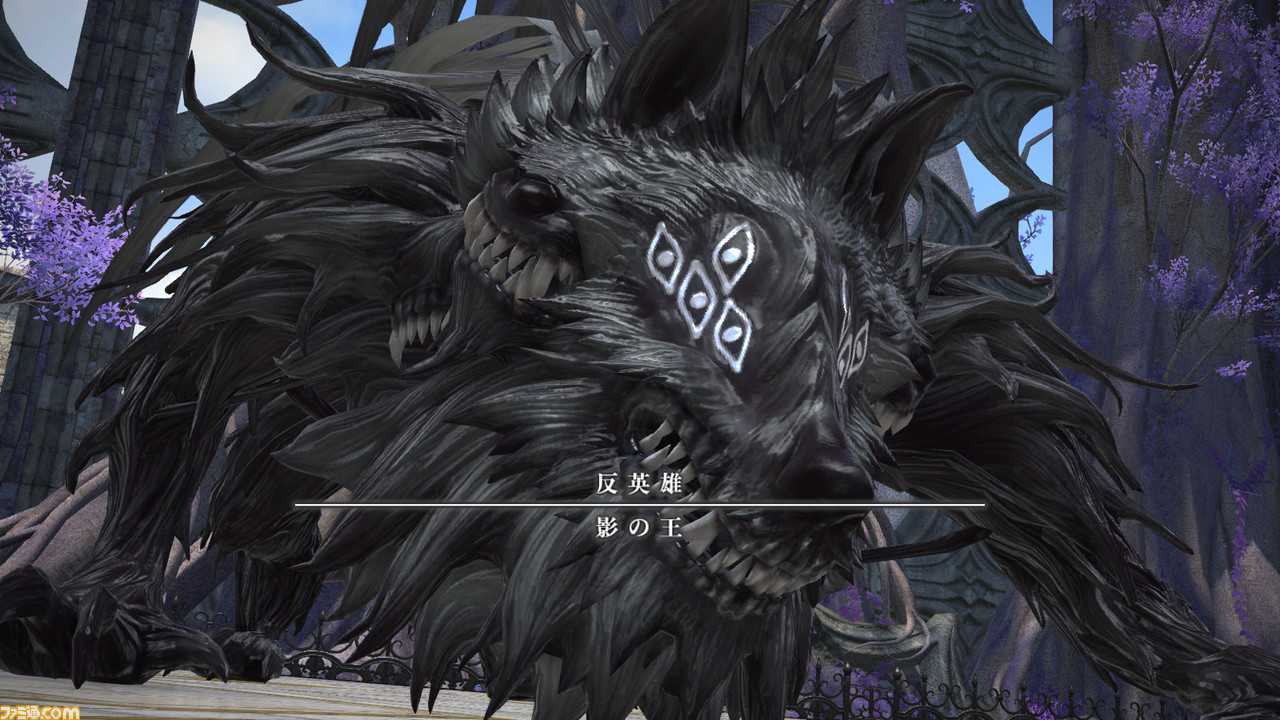
Next we’ll move on to the Second floor.
Let’s begin with the overall concept, if you please.
The concept for Floor 2 is actually quite simple, where the plan was to have the boss playing tricks on the Warriors of Light by using various shadow abilities.
When I first fought the boss, the boss’ shadow attacked me and I was taken aback by it.
For example, when it comes to Giga Slash, players are required to judge whether the attacks came from left or right by looking at the black beast’s animation, but it’s actually the shadow that lunges at the players.
We specified that, at first glance, it would seem that Warriors of Light would be attacked from the boss itself, but they soon realise they were deceived as the shadow materialises and attacks them from the other direction.
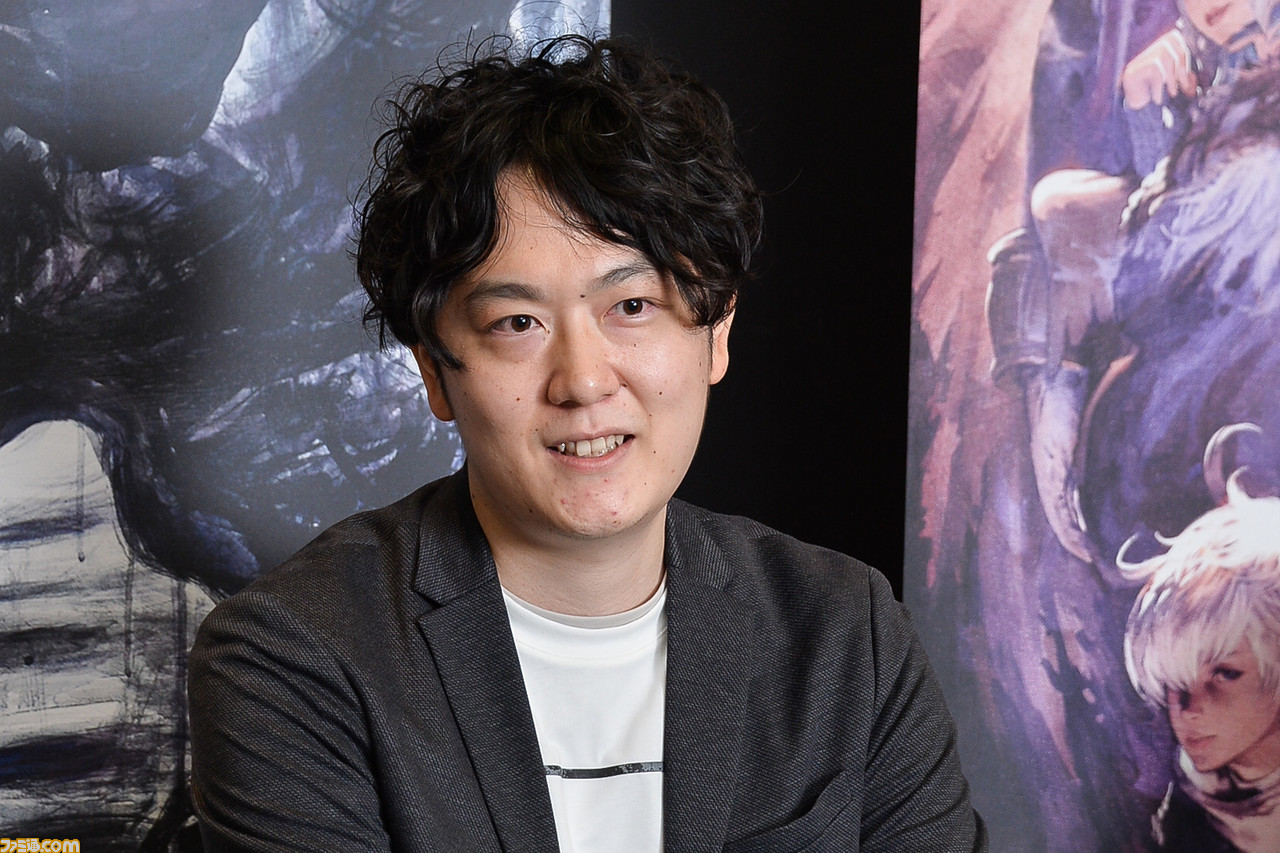
There were also various patterns for the shadows as well wasn’t there.
Since its name is “The Shadowkeeper”… (laughs)
Anyway, I thought of creating a monster that could manipulate shadows at will, that if it could manipulate people’s shadows, then it could also slip into people’s shadows as well as to hide in other shadows.
To express the shadows that appear during Giga Slash or Implosion mechanics, as well as to bring out the characteristics of the shadows when the shadow servants appear, we designed them to have the impression of the silhouette of the Shadow King “Cyella” (Cylva).
In terms of graphic specifications, though we did our best and made adjustments until the last minute to prevent the overlap between the boss and the shadow making things difficult to see, the one that was released (the current state) is already at the limit of what we can do.
Even so, the fact that it was still difficult to see is something we’re going to reflect on, and we will continue to polish our specifications and further build on the experience we gained from this.
In the Giga Slash mentioned earlier, the key to that mechanic is to make a quick left-right decision, but some people may not be good at mechanics like that.
For that reason we set the resolution period to be longer for mechanics where people can be good or weak at.
We made it so that the shadow servants will take a longer amount of time to think before they strike compared to other mechanics. Of course, the length required was adjusted based on maintaining the difficulty level of the floor…
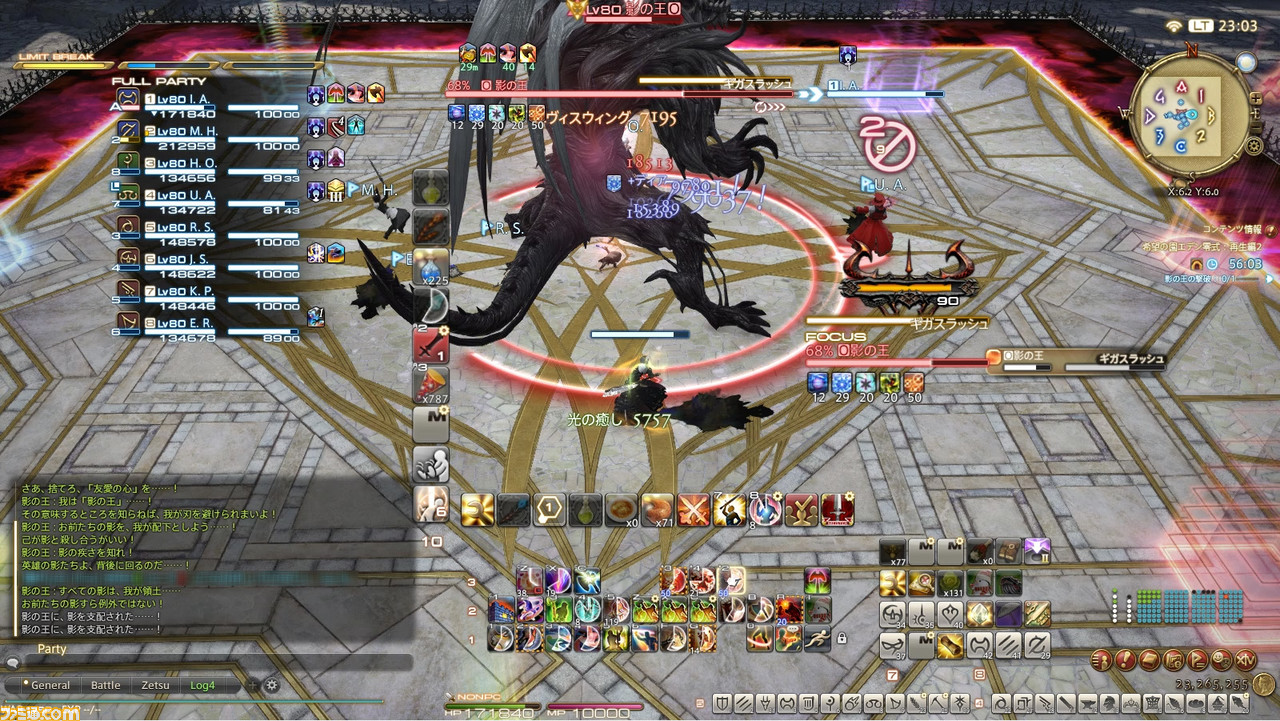
Although we have similar quick problem-solving types of mechanics in Eden’s Verse Floor 3, it still creates a gap between those who are good and those who are weak when compared to other mechanics. Therefore we adjusted the resolution period to match players who are weaker at it.
Since there are also members among the development team who are weak in dealing with the Shadow Servants, we made a lot of adjustments with our development members as the starting point.
While this may sound redundant, the whole “Shadow Servant quiz” did become the hot topic among the players.
I was surprised to hear that there were simulators created for this stage itself but I was happy to hear that. (laughs)
Since the Shadow Servant is a mechanic that requires fast problem-solving, I do think there are players out there who would practice the mechanics outside the content itself.
So having the players create a mechanic simulator and let players realise how many attempts did they get correct in the quiz creates some form of communication amongst the community, and as a developer, I’m very happy to see that happening.
In the second floor there are many mechanics that utilise shadows, and among these mechanics, ones where the boss unleashes combo attacks like “Voidgate” and “Voidgate Amplifier,” in other words the “Tower mechanics” really left a strong impression here.
For that phase, I imagined that Shadowkeeper is trying to go all out against the Warriors of Light after getting cornered, and to go against an 8-man party of Warriors of Light, the boss had to put out a number of Voidgates to overwhelm them.
However, instead of using those shadow abilities to toy with the Warriors of Light during the battle, the ability would be used back against the boss and ultimately allow the players to overcome it. That was the image I had in mind.
To let the shadows step on the tower itself was an interesting idea actually.
The mechanics that players called the “Towers” are usually just simply entering the circle indicators and then resolving the mechanic from there, but to have them purposely enter the floors that one shouldn’t step on, plus having their own shadows appear on the tower is an element we added that did not exist prior to this.
The mechanic of having party members be in tune with each other and stand on their assigned spot using their shadows, and stack nicely with Shadowy Eruption is a phase that requires party play and a sense of unity.
It’s hard to resolve it at first but if the feeling of having the phase resolved ends up bringing a positive feeling and a sense of achievement, then I’d be really happy to hear that.
It was indeed bewildering for anyone to see that large number of towers for the first time (laughs). The amount of towers that appear outright exceeded the amount of players in the party.
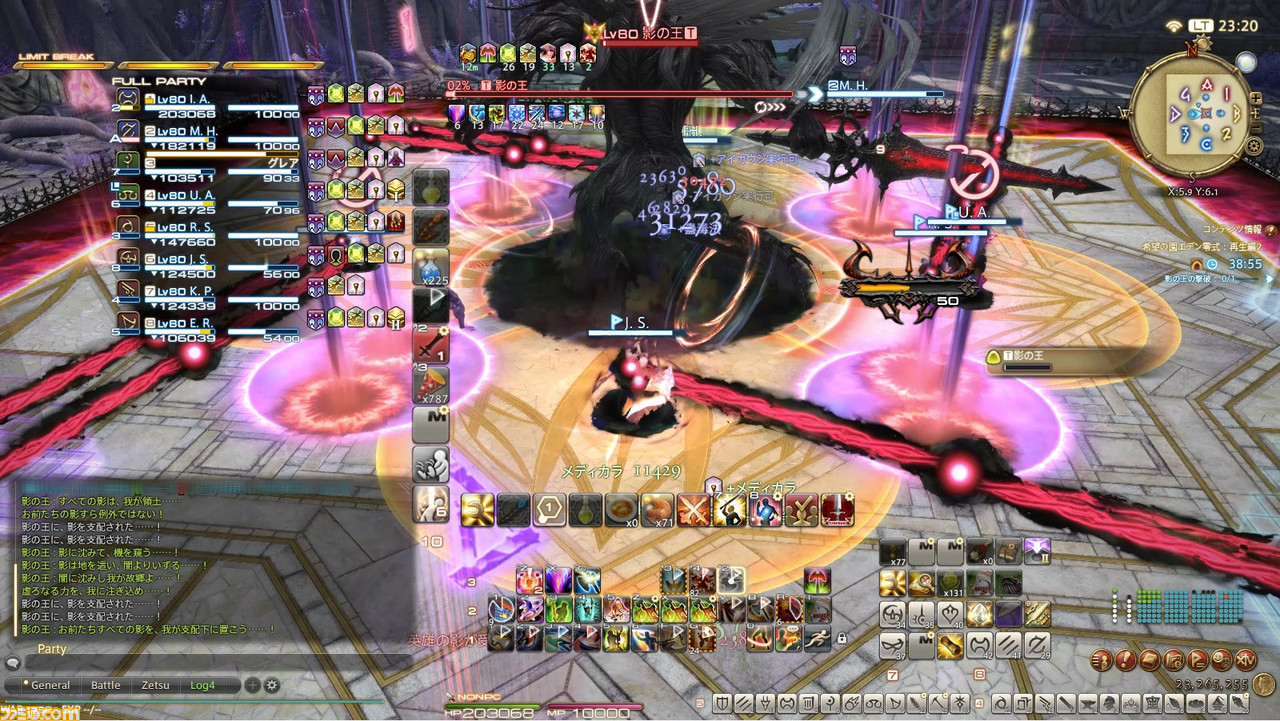
That was actually one of the objectives we aimed for with this mechanic.
By stepping on the damage puddle that one shouldn’t be stepping on while using their shadows to clear it, we made it so that it serves as a puzzle mechanic instead.
Of course, we didn’t make it without giving a hint or two, and we prepared various situations where the players needs to resolve the Shadowkeeper and the knockback during the Shadow Cleave phase, as well as stepping on Pitch Bog and so on, so players will be able to grasp the hint given by the mechanic.
Throughout the second floor overall, there were some areas that were challenging to tackle, and on the other hand there were also other aspects like specific members who didn’t fail the mechanic getting a debuff when the mechanic overall failed to resolve as well as the decision speed in resolving the orbs, that even if these were implemented for the sake of balance adjustments, it’s still an issue that is left over for me to review.
On these aspects, however, I’ll be sure to reflect on it while looking through player feedback and make use of that experience gained for the next project.
Setting Constraints To Create Challenges Within Straightforward And Intuitive Mechanics
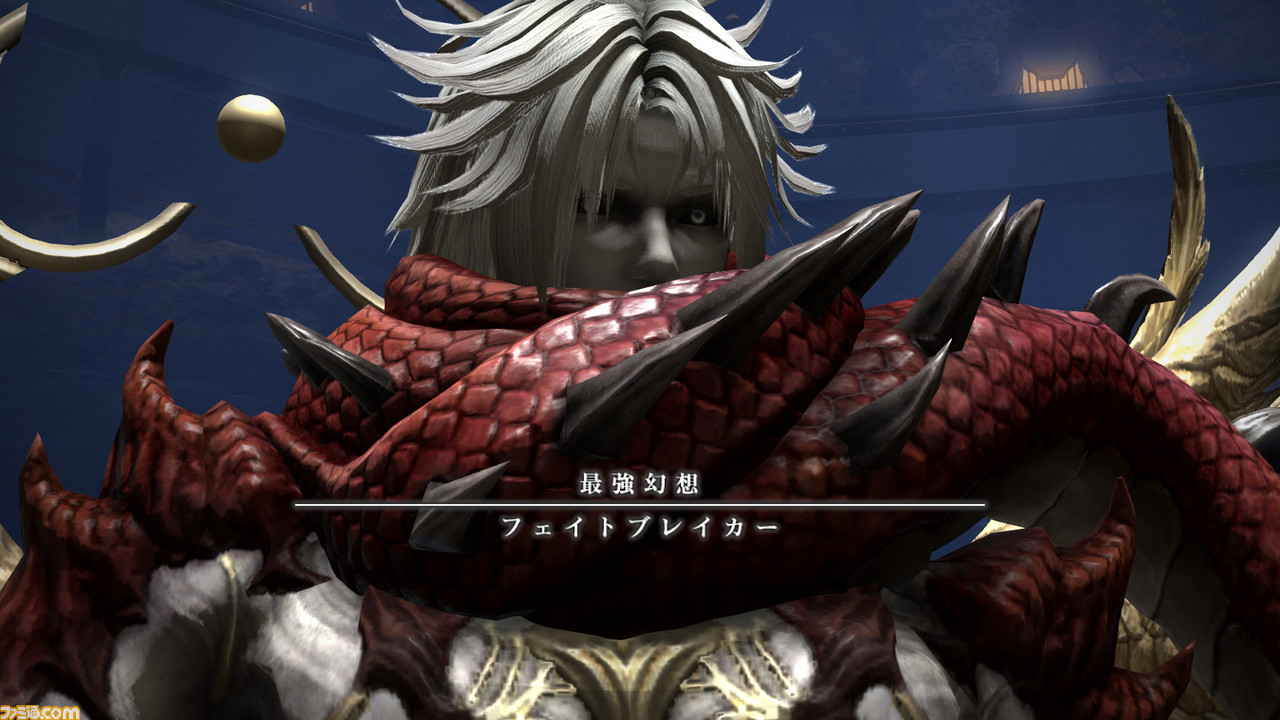
Next we’ll talk about Fatebreaker, the boss of the Third floor.
Let’s hear the concept behind it.
The concept setting here is to “create a Gunbreaker who aims to be the strongest”.
This was the topic that came to mind when Nakagawa and I first discussed it, but we thought that if Thancred were to wield a gunblade, then we should take it all the way.
Afterwards, while I was designing the mechanics, I decided to impose a restriction on myself, “This boss will be a straightforward one.” This was decided after a discussion with Nakagawa.
Since there are a lot of curveball mechanics in Floors 1 and 2, we decided not to put in mechanics that evoke that take a lot of work to decipher instead made them more straightforward and intuitive in terms of the types of attacks used.
To purposely impose a straightforward duel on the third floor is an interesting concept.
Other than that, what restrictions were set for this battle?
In Seat of Sacrifice, which was released in Patch 5.3, there’s the element of the boss infusing magic into his sword, we were careful not to have the concept overlap with the element of Gunbreakers infusing power into the cartridge.
As for the others, we didn’t want to implement mechanics that required players to intuitwhether to move left or right, as well as refrained from incorporating often seen mechanics like what players referred to as “Dynamo” or “Chariot,”(※)and we made sure that we had it sorted out before we started work on the idea.
※ “Dynamo” and “Chariot” are the moves used by Nael van Darnus. The full name for these skills came from “Lunar Dynamo” and “Iron Chariot,” respectively.
Lunar Dynamo is an area of effect skill in which the boss does a donut type attack, leaving the safe spot beneath the boss, while Iron Chariot is an area of effect attack that happens in a 360 degree circle around the boss, requiring players to move away.
These moves, as well as others that have similar mechanics are typically labeled by players as “Dynamo” or “Chariot” and are used as a common language within the community.
We refer to them as “donut type AoE” or “PBAE” in our development team but it tends to be easily incorporated into our ideas due to how it works as an orthodox multi choice attack as well as a versatile skill that can be stacked with other attacks.
Left-right based attacks count as well, and as a creator it really is a convenient skill.
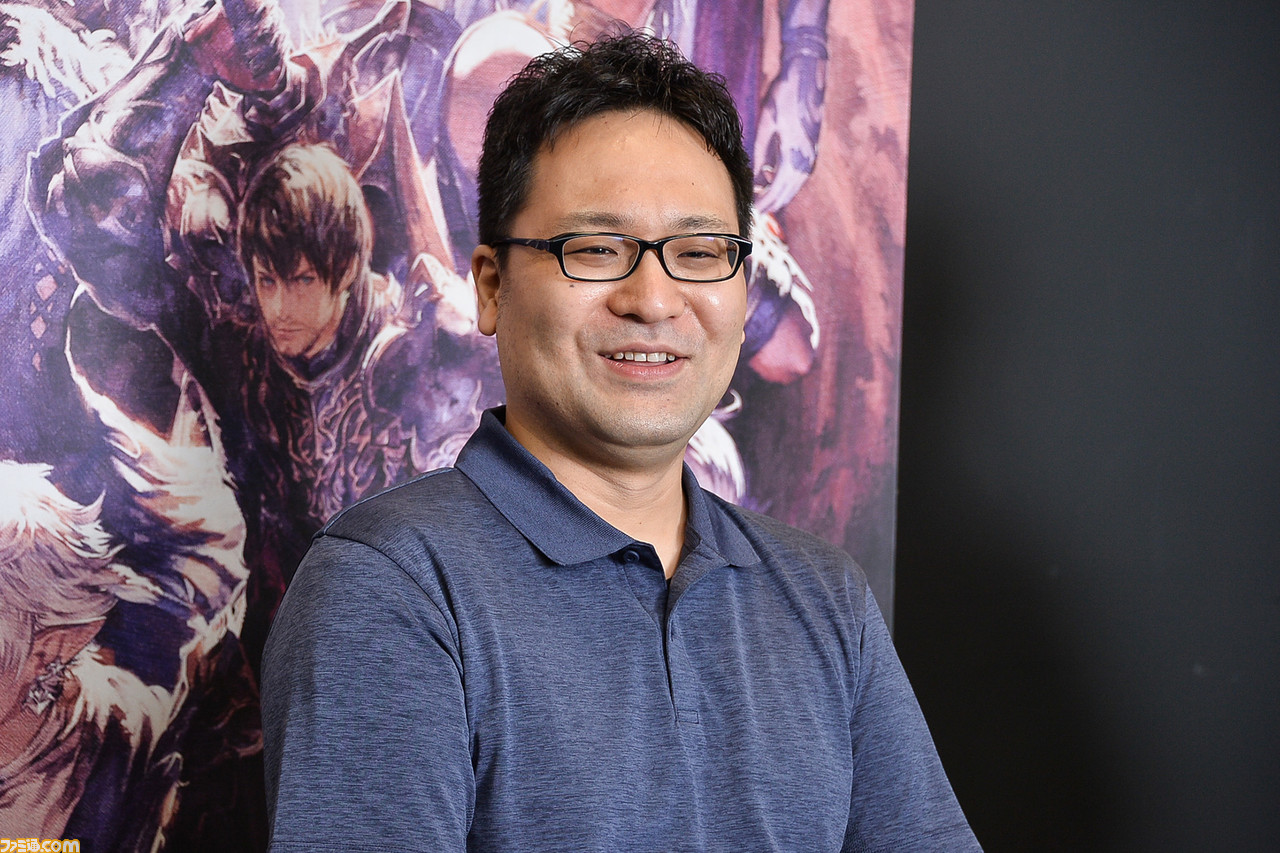
A prime example of an attack that players easily fall for. (laughs)
It’s true that the Third floor almost has none of the “how do we solve this mechanic?” type in it. It was created in such a way that once you see it, you could roughly find the solution to the mechanic.
However, I thought that the attack tempo was the brilliant thing here.
First, I set the battle difficulty by adjusting it to allow a response period, taking into consideration how quickly players can respond.
Furthermore, I paid attention to the idea of “stacking” multiple mechanics when designing the battle, where even if a single skill in itself is easy to resolve, the difficulty increases sharply when the mechanics are unleashed continuously and simultaneously.
In other words, I attempted to createdifficulty through the idea of skills by themselves being easy to avoid, but that they gradually stack and multiply overtime.
It’s precisely because it’s simple that you can increase the difficulty further.
Also, since the impression here is that the Third floor is meant to be a wall, and is commonly known to be the actual start of Savage, did you pay attention to the state of strategies and progression during the first or second week of release?
That’s right.
Since I imagined that the player’s equipment would be at around a certain level, the values are set to match the level, and that the damage difficulty is set at the limit of what is allowed for the Third floor.
Especially during the initial phase of progression the damage over time skill “Burnished Glory” was particularly threatening, and the number adjusted for that skill was amazing.
If the party didn’t come up with a plan to mitigate the incoming damage and communicate it amongst themselves beforehand, it’ll result in a swift decrease in HP.
Regarding damage mitigation, we have made “Elemental Break” the mechanic that must be mitigated in the early stages of the fight, as it requires both stacking to share damage and spreading out.
After calculating the average value of equipment and HP values, I adjusted it so that damage inflicted from Elemental Break will cause a wipe without mitigation until roughly the second week after the implementation of Eden’s Promise: Savage.
Although Burnished Glory is implemented as a way to allow easier mitigation usage, it also made the healers’ job a lot more difficult. Since HP is gradually reduced, healers will have to be aware not only of the immediate damage taken but also the healing that is required after the mechanic has gone off.
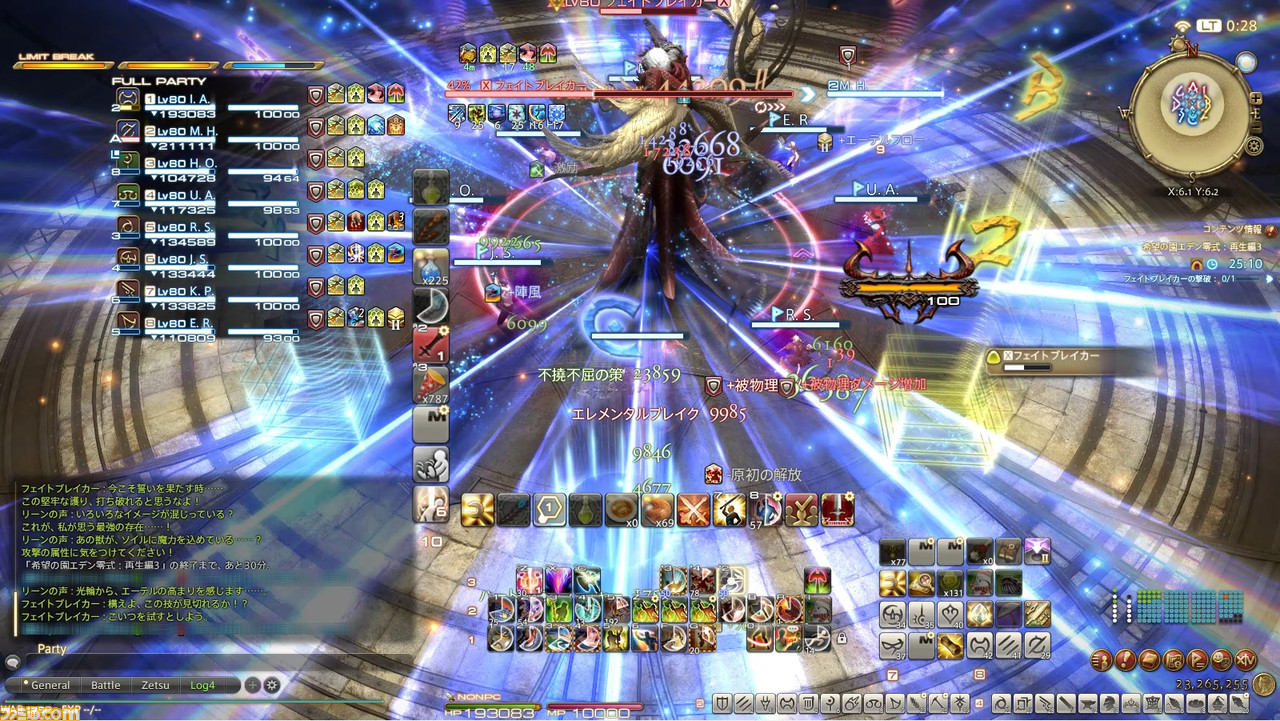
I think I’m not alone in situations where I got scolded for forgetting to use Addle… (laughs)
I do think that needing to use all mitigation skills available to protect the party against Burnished Glory actually makes the difficulty a lot higher.
Once it’s decided among the group which mitigation to use during Elemental Break, even if the person assigned forgot to use their mitigation skills, others should have their mitigation abilities available for the situation, so it should be able to prevent a complete wipe.
Of course, it would be hard for players during the first week of release where their equipment isn’t fully upgraded yet, but the number values for this battle is set so that, as they replace their equipment and gradually get stronger, a mistake or two in mitigation will not snowball the battle into a complete wipe.
Come to think of it, I remember Nakagawa-san jokingly mentioned on “creating another ※Pantokrator flow for Eden’s Promise”, so I assume that the Sundered Sky is the Eden’s Promise’s version of Pantokrator here, am I right?
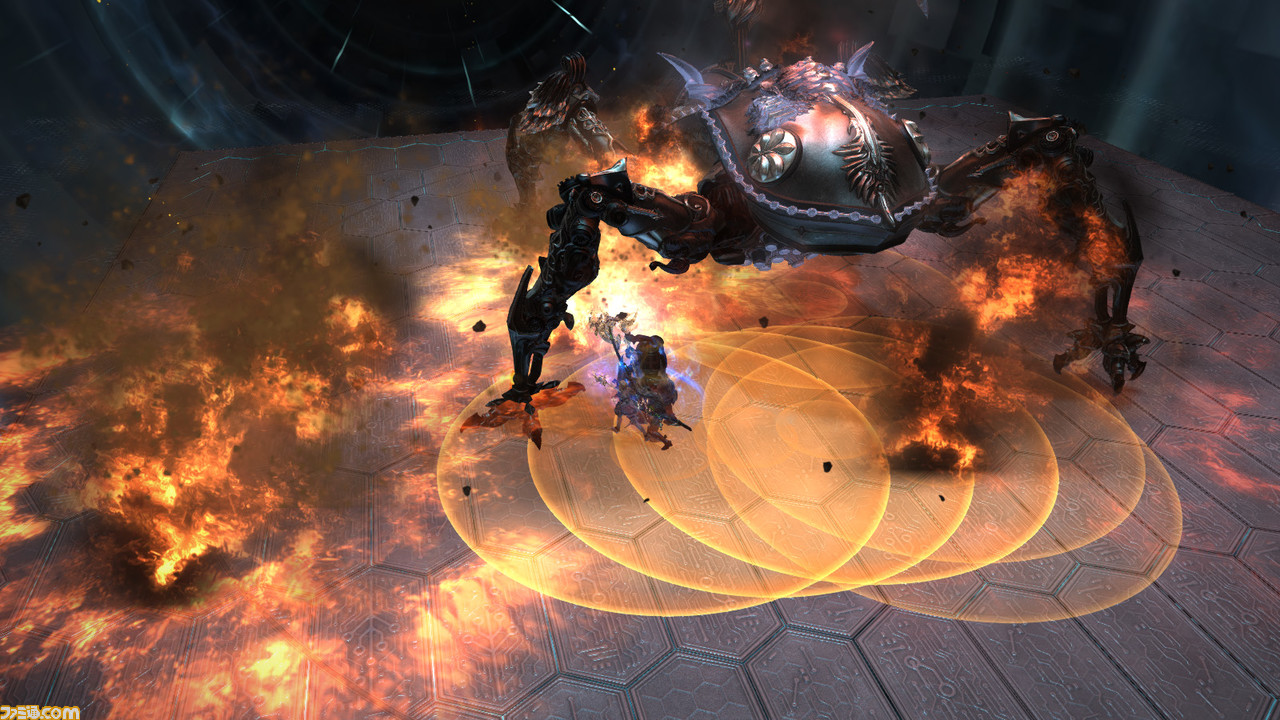
No, I have to say that is not the case here! (laughs bitterly)
This is also one of the restrictions I mentioned from the beginning, “Absolutely no Pantokrator allowed.”
Since Leviathan used a Pantokrator-like skill during the third floor of Eden’s Gate, and the final phase seen in the third floor of Eden’s Verse also had a Pantokrator-like feel to it, this became a topic of discussion.
Because of what happened, I’m definitely not implementing anything close to Pantokrator. (laughs)
You really paid attention to it from the beginning. (laughs)
Actually, the development team has its own definition of a Pantokrator.
There are various examples for this: Omega would shoot missiles all over the place, while Leviathan would shoot beams all around, and the Idol of Darkness would unleash a stream of tornado attacks. In other words, unleashing attacks that seem unstoppable when getting cornered.
In addition to the definition above, allowing the Warriors of Light to run in a circle around the boss’ hitbox is also defined as Pantokrator within the development team.
I see.
So just having all players moving in unison does not mean the mechanic is classified as Pantokrator. (laughs)
That’s right. (laughs)
Sundred Sky is what we considered to be close to a “Sports Festival” type mechanic. The use of this mechanic began from the Fourth floor of Alexander: Midas.
In other words, this is when the boss becomes untargetable and players must focus solely on their movement to avoid a series of difficult mechanics thrown at them.
To players, that type of mechanic may have origins from The Second Coil of Bahamut, Fourth floor (T9 - Nael) during the meteor phase, but since the development team didn’t intend to have that mechanic resolved in that manner at that time, the actual time where we purposefully created a “Sports Festival” type mechanic was from the Fourth floor of Midas.
The so-called Sports Festival type mechanic here is actually frequently used in Ultimates.
That’s why when I first played it, I felt that that whole mechanic, including the speed, gave me the impression “Sundred Sky sure reminds me of Ultimate.”
While the objective seems simple, the fast pace as well as the requirement in needing all members to move in unison is what made that part of the fight feel somewhat similar to Ultimate Bahamut.
To me, I imagined it to be an easier version of Ultimate Bahamut, so…
Although the conversation is slightly derailed, it was really interesting to learn how it worked.
I just wanted to assert my stance, so I’m very content. Thank you very much. (laughs)
Lastly, just to slightly change the subject, the voice of Thancred and Ryne was actually a raid original, yes?
Was this incorporated during the planning phase?
Yes.
When the planning was at a certain point, I heard that there would be voice acting recorded for this, so I first thought up dialogue, and the scenario team would brush up the lines, and then recorded it.
The recorded lines were really cool as a result, and I thought I should have done this more…
Quite a privilege to have your own thought-up skills to be given a completely new voice over.
I was really happy about it!
Creating Skill Names And Animations For Fans Of FFVIII To Enjoy
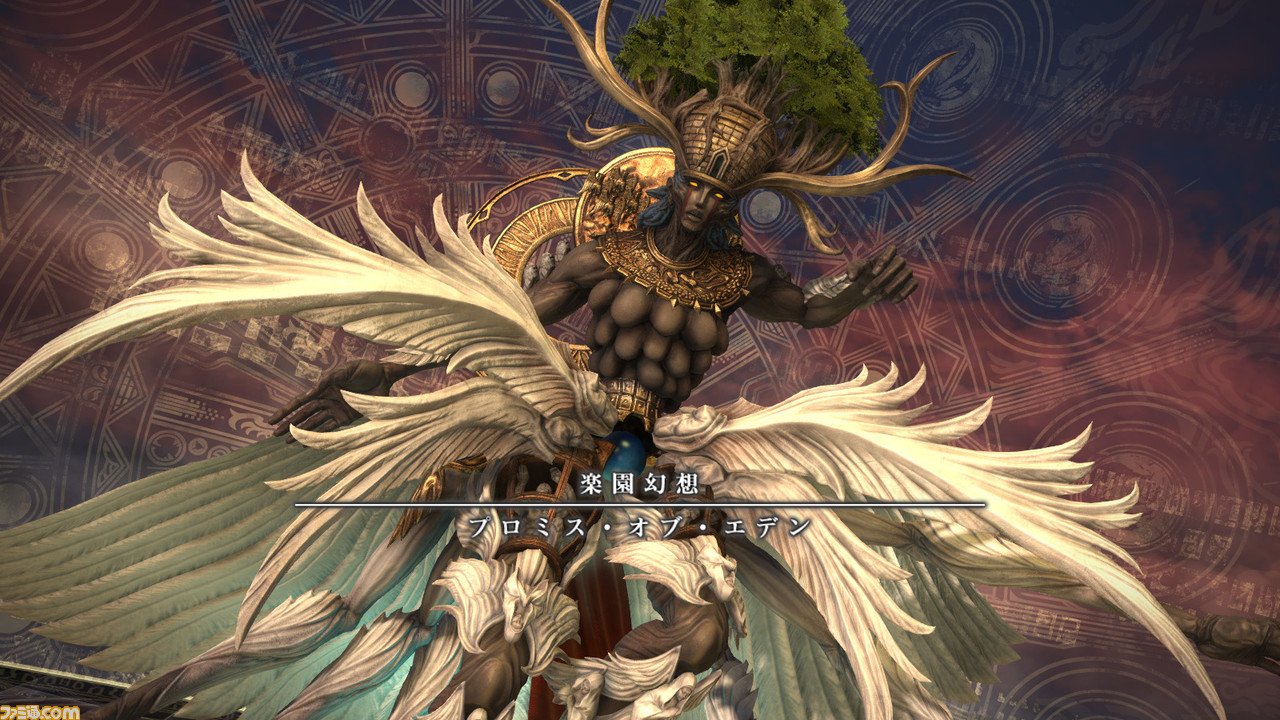
Next we’ll dive into the Fourth floor, the last one on the menu.
First, let’s hear the reason for separating the encounter into 2 parts.
We were continuously debating whether or not to split this encounter into two parts.
If you want to know what the developers thought of this particular issue, as well as the flow up until now, you can refer to the Eden’s Verse interview we had months ago for more details about it.
This time we had Gaia appear as the Oracle of Darkness and the intention of having the encounter differ greatly between the first and second half, as well as the intention of bringing an exciting final battle for the Eden series. These were the plans we came up with based on the mentioned premises.
During the meeting where all members of the Battle System team and the Monster team gathered to review the plan, we discussed both the advantages and disadvantages of splitting the fight into two parts.
After hearing everyone’s opinions, both Yoshihashi and Daisuke (Daisuke Nakagawa, Battle Content Designer behind TEA) gave me feedback, and we came to our conclusion from there.
Was Daisuke-san involved in the production of Eden’s Promise 4th floor?
Yes.
He helped me out a lot as a mentor (advisor) here, providing support when I was having trouble, and we worked together in order to finish this task.
Oh, that’s good to know.
Now, may I know the concept of the Fourth floor then.
The concept of the Promise of Eden is “the battle against memories and imagination.”
Throughout the story seen in Eden’s Gate and Eden’s Verse, the Warriors of Light use their own memories to summon Primals through Eden in order to reawaken various elements which were erased by the Flood of Light that created the Empty.
Although the Primals summoned have captured the overall characteristics of their original counterpart, they ended up looking somehow different, hence it wasn’t a perfect reproduction but contained elements that were mixed and influenced by something else, and some were even transformed or deformed. These elements are incorporated not only through the appearance of the bosses but also its battle mechanics.
Through these battles, we structured it to make Eden’s Promise, the final opponent that the players face, which incorporates a compilation of previously seen elements that are still somewhat different, utilising memories and imagination.
So from that flow, you then expanded it into the Junction mechanic?
That would be the case.
In addition to using memories to attack, we also had the idea that the memories would empower the boss.
These mechanics were conceptualised in advance, and then the completed mechanics were later given names such as “Release” and “Junction”.
So it acts as if the boss is junctioning the power of the Primals from the crystals seen from the outer arena, and that makes a really unique battle.
When creating the rough draft for the fourth floor, at first I was thinking of which part would be the most exciting portion of the battle in normal mode.
When we were plotting out the story, it was roughly decided that Gaia’s memories would be destroyed and Ryne would go to rescue Gaia after she completely lost her memories, so I wanted to connect that moment and make it part of the fight. I thought that we could hype up the situation by intimately experiencing Ryne and Gaia’s story.
Throughout the scenario we saw Ascian Mitron extracting, materialising and destroying Gaia’s memories, so I tried to recreate that moment in the fight as well. This was done through the memories that appear within Eden’s space as well as the materialization of Ryne and Gaia’s memories and within the Crystal, I had incorporated this aspect as one of the battle mechanics.
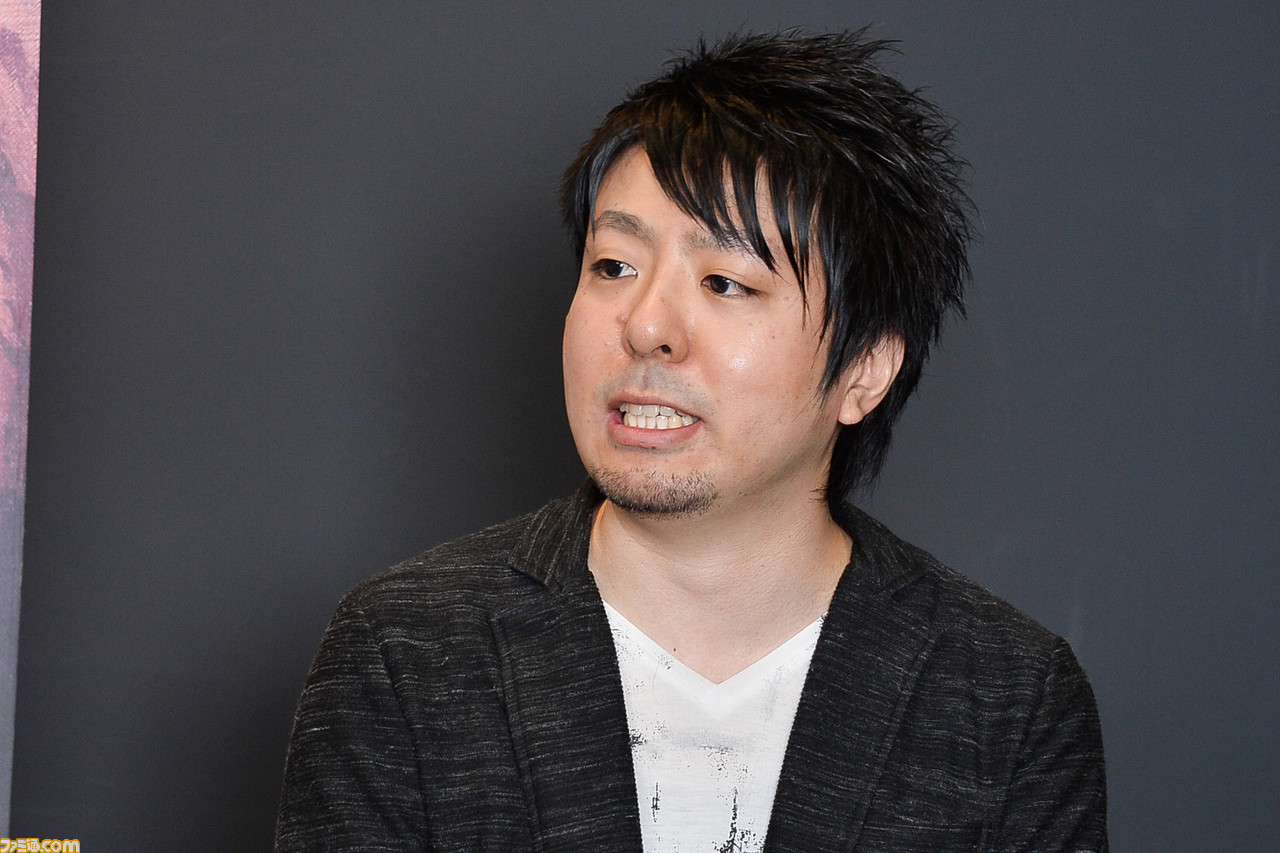
Skills used by the Fourth floor bosses such as Shockwave Pulsar, Hell’s Judgement, Apocalypse, Double, Triple and Relativity (Time Compression in Japanese) originally came from FFVIII.
Did you intentionally make it a reference to Ultimecia?
As already mentioned by Nakagawa in the first half of the interview, we had a time where we wondered whether we could bring Ultimecia into FFXIV and thought we could create Ultimecia to appear in the latter half of the battle, but the plan to include Eden’s Promise was already underway, so we had to cancel our plan to create Ultimecia for this battle.
I knew that there were some people in the community who were expecting a fight with Ultimecia, so I decided to keep the names of skills and mechanics that are relevant to the game without removing everything.
That means integrating its essence into the battle, doesn’t it?
Yes, when we were making requests to the development team, we requested that the “Release” and “Junction” effects be recreated as close as the one from the original FFVIII.
The Apocalypse effect was quite similar to the one from FFVIII too.
That’s right.
The skill motif, along with others from FFVIII, was applied into the game after discussion with the artists while looking at videos, and we updated it to make it fit with the FFXIV aesthetic while working to recreate the skills with the intention of paying homage to the original.
Like the original, Hell’s Judgement drops everyone’s HP down to 1.
Since Hell’s Judgement is only used once in the entire battle, I used it quite extravagantly…
However, it did jog my traumatic memories of being horrified over having my HP was reduced to 1 right at the beginning of the battle in FFVIII, so I felt I definitely want to put this in.
And I assume that Shellcrusher, Black Halo, and Spirit Taker were names taken from FFXI?
That wasn’t actually my idea but a suggestion from Oda (Banri Oda, Lead Story Designer) and another person, so I asked them about the reason behind the name.
Their answer given was thus: “The hammer technique is taken from FFXI. Action names and monster skills using certain weapons are sometimes taken from FFXI and that’s not limited to only Gaia.
So once again for this case, since there are both two-handed and one-handed clubs in FFXI when it comes to hammers, we imagined it from there and picked up the names that fit the animation and effect of those skills and attached it”.
I would like to express my thanks for going out of your way to inquire about the reason behind ability names.
Next, I’d like to move on to Diamond Dust.
This is one of the tougher parts of the battle for many players in the first half of the fight, so I’d like to know what kind of intention you had when making this mechanic.
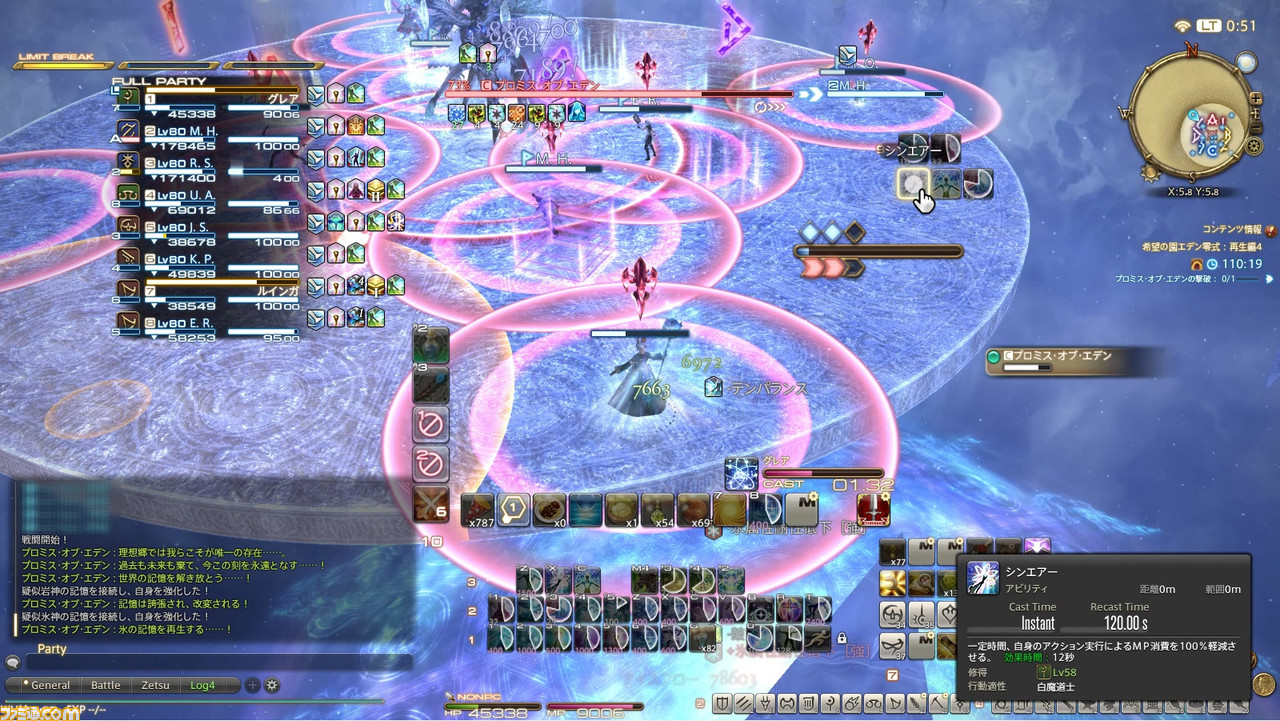
For Diamond Dust, I was aware that Diamond Dust was created to be a very difficult mechanic, but it turned out to be harder than I was expecting.
I think the reason is due to the fact that there are several things players had to pay attention to, such as how players who needed healing are also required to move to very specific positions, as well as deciding what direction each player spreads, and paying attention when moving away from ice pillar attacks that come from various directions, also improvise when needed, and so on.
The points needed to keep in mind probably made things complicated which may be the reason why the mechanic was tough to resolve.
By the way, this doesn’t apply only to Diamond Dust, but throughout the entire stage, we had to make adjustments with keen awareness to ensure it is content where healers can do their best.
We wanted to ensure that healers can enjoy the process of optimising heals by discussing with their healer partner, share their roles in healing and gain further experience, such as applying barriers, reducing damage through mitigation, considering where to use instant recovery spells, and so on.
The same is true for the Earthen Fury, Statues, and Lions that followed after Diamond Dust, where they have to heal accordingly while resolving their own mechanics at the same time.
As healing is optimised, it opens up more room for healers to more safely attack, which allows healers to contribute damage if they choose.
It’s true that there are more raidwide attacks throughout this stage, aren’t there?
Even so, I felt a certain leniency when Diamond Dust appeared in the beginning.
I shudder to think how it would have turned out if that mechanic came after Lions (Beastly Sculptures). (laughs)
Similarly, there is a mechanic in Eden’s Verse 4th floor which is called Light Rampant that appeared during the first half of the fight, yes? Their positions are similar in this regard.
By the way, it did take us some time during the play test on Diamond’s Dust, and we had 8 players who contributed their opinions and comments on the heal timing, the movements, like this player should move here while the other player should move there, and so on.
From there, we adjusted the fight based on feedback given.
The point here is that even if the healers manoeuvred well, players who receive heals need to be aware of it too.
First, I solidified the speed of each movement, like getting to the safe zone to avoid getting hit, group up, spread out, as well as the healing required.
After that, I kept raising the damage value, and further pushing the process which resulted in the final value we decided on.
After going through various trial-and-error due to overtuning, and then observing the situation after lowering the values, I personally feel that I’ve managed to push it to the limit.
Regarding the previously mentioned Earthen Fury, the 3-colored markers that appear in this phase definitely felt familiar to players who experienced Eden’s Gate: Savage Fourth floor.
So I’d like to know what made you settle on the usage of those markers?
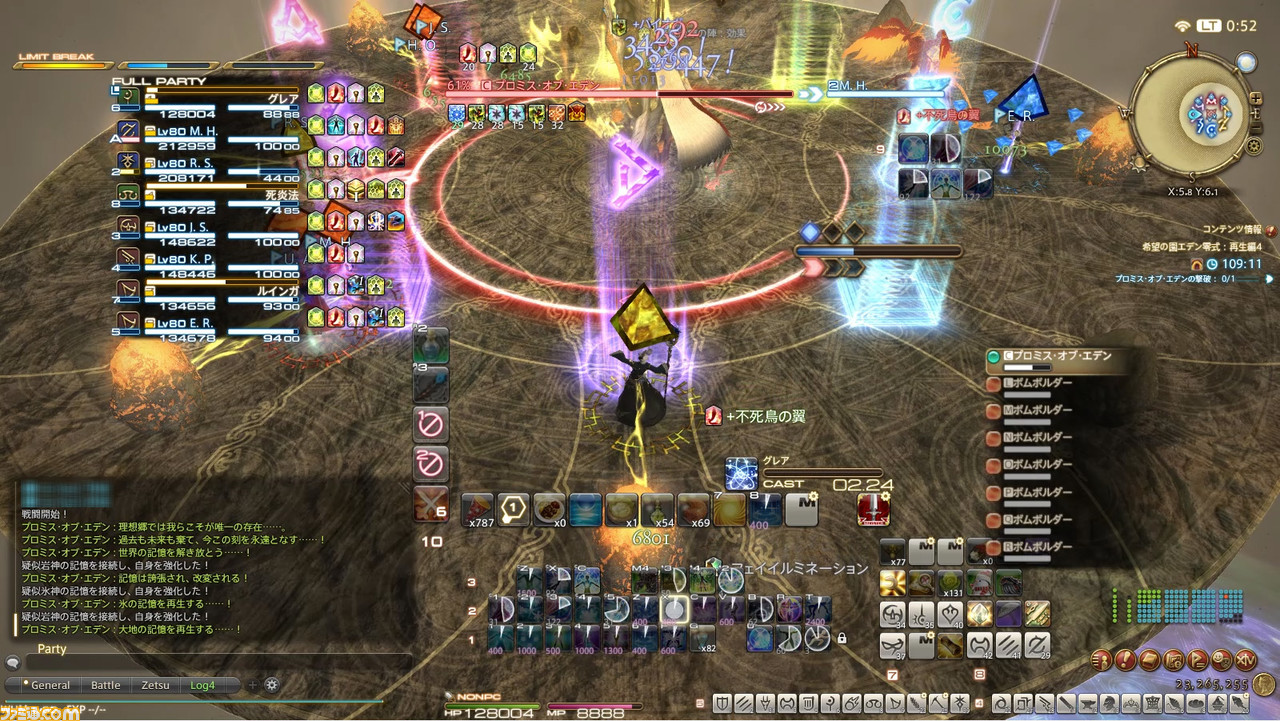
The idea came easily to me when I was thinking about the mechanic.
The three colored markers that appear in the Fourth floor of Eden’s Gate: Savage were impactful, so I decided to incorporate them into this floor, forming the element of how it looked familiar while working slightly differently, and it became the concept for this mechanic.
Those tri-colored markers are created by Daisuke-san, who is your mentor for this stage.
What was Daisuke-san’s reaction to this?
He looked happy about it. (laughs)
By the way, during the Earthen Fury phase, there are a total of 3 different marker patterns that are attached on the players in order, but who receives what marker was random while we were designing it, so it was even more complicated than the final iteration ended up being.
We then realised that the difficulty may have been overtuned,so we settled on the current version of the mechanic.
The values for Diamond Dust were adjusted to be at the limit as well, and considering Earthen Fury that came after was also difficult in its own right, we thought we may have overdid it.
During the play test, I remember the members who took part in modifying the mechanic sighed and said that they couldn’t remember the markers. (laughs)
The initial version required players to look at the markers given and immediately decide on which pattern to resolve the mechanic, and we eventually realised that given the time they had to react, it’d be impossible for players to successfully resolve the mechanic.
We could have given players more time before the mechanic finished, but considering we wanted to keep a focus on mechanic speed, eventually we settled on what became its final iteration.
By the way, the cooldown timer for two minute abilities comes up halfway through Diamond Dust, while abilities with a three minute cooldown timer would come up during Earthen Fury.
Was the timeline for these mechanics set intentionally that way?
The waiting time between mechanics, along with slotting in multi-target attacks, was adjusted so that the mechanics generally come at one-minute intervals.
This is where Tamaki from the Battle System Team (Hikaru Tamaki, Battle System Designer), who worked on Eden’s Verse fourth floor spent a lot of time helping us out and gave us advice on knowing when to extend or shorten the interval time between mechanics, so we made adjustments based on that.
What’s left would be that iconic mechanic that is on par with Diamond Dust, which is known as Lions.
There are many strategies devised by the community out there, but the currently mainstream method would be the “TT Strat” that is used by the players. I’m sure you’re aware of the trend in player strategies around here, but was it what you expected?
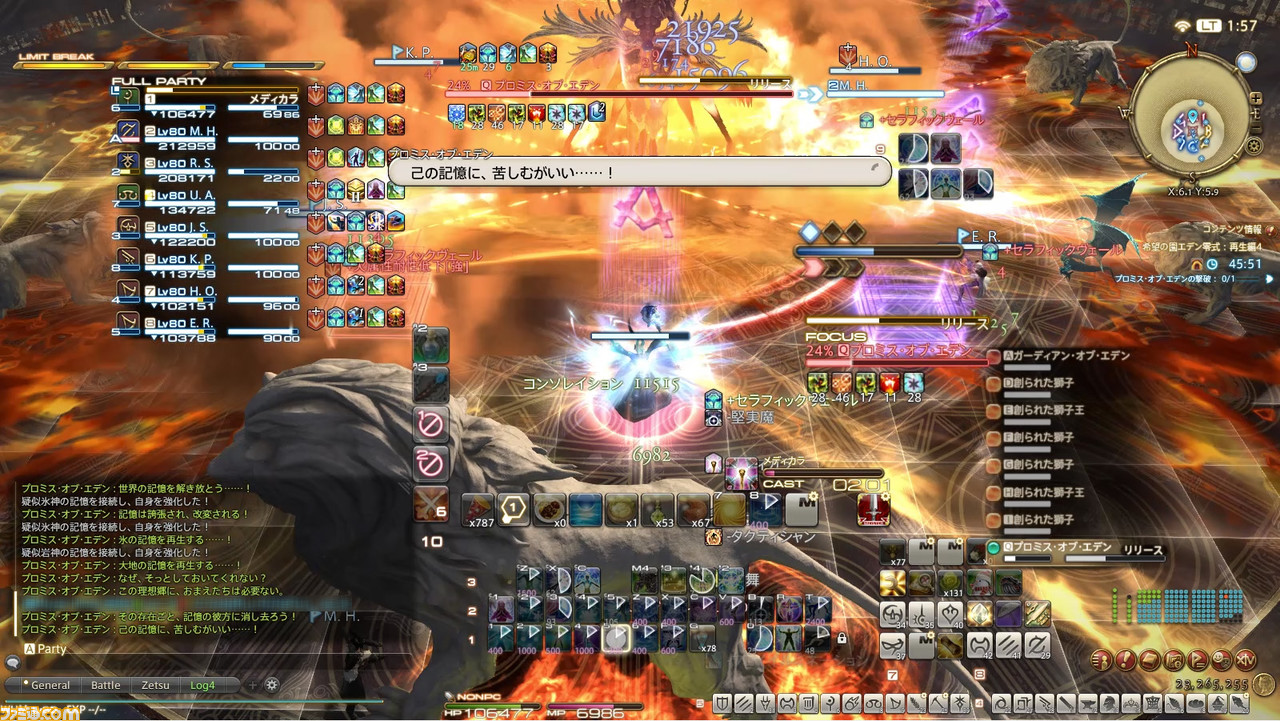
Although Yoshida mentioned during the 14-hour broadcast that the “TT Strat” was “almost what was intended (by the developers),” there were in fact two assumed strategies that we had at that time, with one using knockback prevention skills and one without, and the so called “TT Strat” is very different from the non-knockback prevention strategy.
What was the intended strategy for this mechanic then?
There are a total of 3 Lionsblaze unleashed during the phase but the default strategy was to have 4 players lining up vertically to tackle the first Lionsblaze.
Then during the second one, each person will get knocked back to the lion’s side and direct the Lionsblaze outward, and finally return to the center during the third time.
This applies to Diamond Dust as well but since using knockback prevention skills were unusable when we were running the playtest, players had to resolve the mechanic without using knockback prevention skills.
Currently all jobs can nullify knockback through skills like Arms Length and Surecast, but I couldn’t have imagined the mechanic was created without taking that into consideration.
Our consensus was to guarantee that there will be no need for knockback prevention as much as possible. Therefore, the second Lionsblaze knocks the players back, and that mechanic is created with that condition to resolve the mechanic.
Of course, it is possible that all players would think of a solution that assumes the usage of knockback prevention skills, and the second assumption here is that the mechanic will be resolved through the so-called “TT Strat” that you just mentioned.
However, when that happens, you would have to be standing on an amazingly borderline safe spot here so my honest impression here is that it may or may not become a mainstream strategy to use.
So when Yoshida received the comment about it, he’d then replied “I’m sorry I said something so nuanced!” to everyone. (laughs)
While the battle will result in a wipe with even a small mistake in positioning, through the use of markers the mechanics can be resolved nicely, I see.
Now let us move to the second part of the battle, shall we?
In this battle, the Spell-in-Waiting was first seen in Eden’s Gate 2nd floor, used by the boss Voidwalker as the main mechanic.
Was the decision of using Spell-in-Waiting in the second part of the battle already made when working on it?
The concept of the Oracle of Darkness was that “she uses a powerful hammer and amazing time based magic.”
Although this isn’t actually an official rule and just my personal interpretation, I think the Spell-in-Waiting is actually one type of time based magic…
So to have Gaia use this type of magic would mean the Oracle of Darkness who regained her original form is capable of utilising a far more fearsome time based magic… and that was how the idea was initially conceived.
Naturally, I couldn’t leave out the Spell-in-Waiting, and I wanted to create something as memorable as that iconic mechanic, so I ended up conceiving the idea of time-based skills like Return or Speed that occurred while the Relativity mechanic is going on.
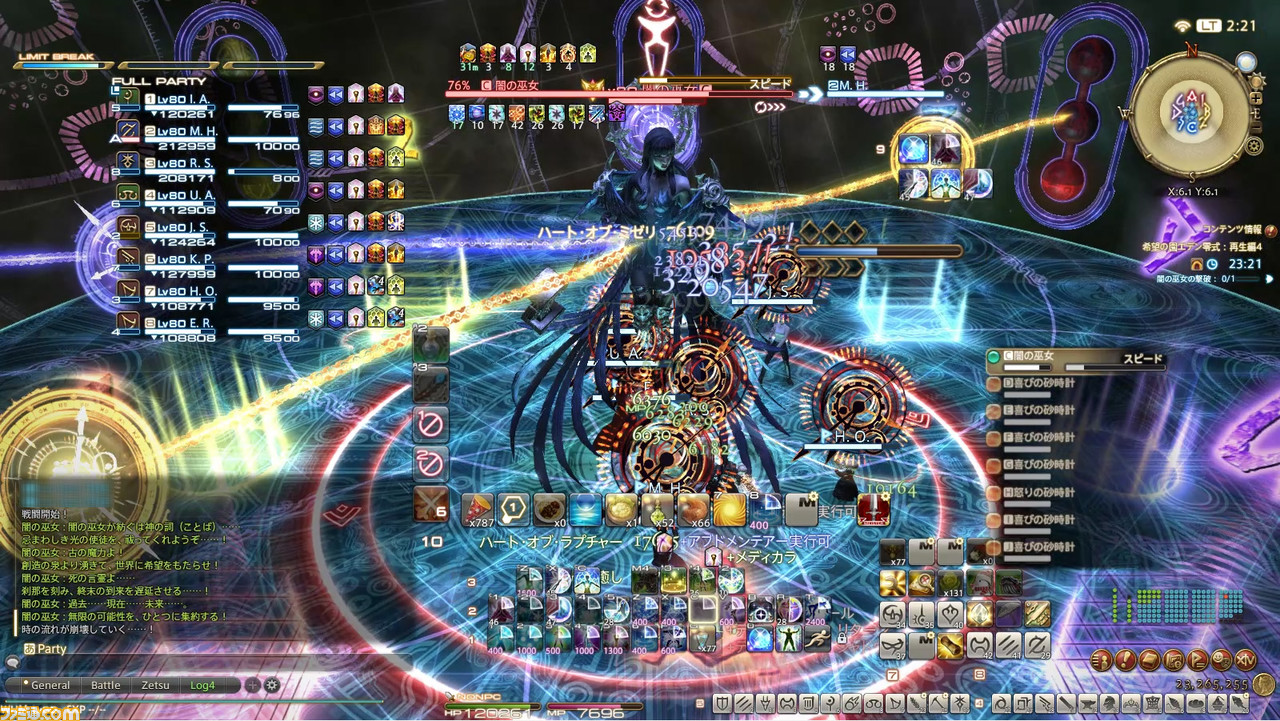
The one who conceived the idea of Spell-in-Waiting was Nakagawa-san, wasn’t it?
I remember that the Spell-in-Waiting was easier to adjust with or without the random elements, and that reason too was why it was used in the latter half battle of Eden’s Promise 4th floor.
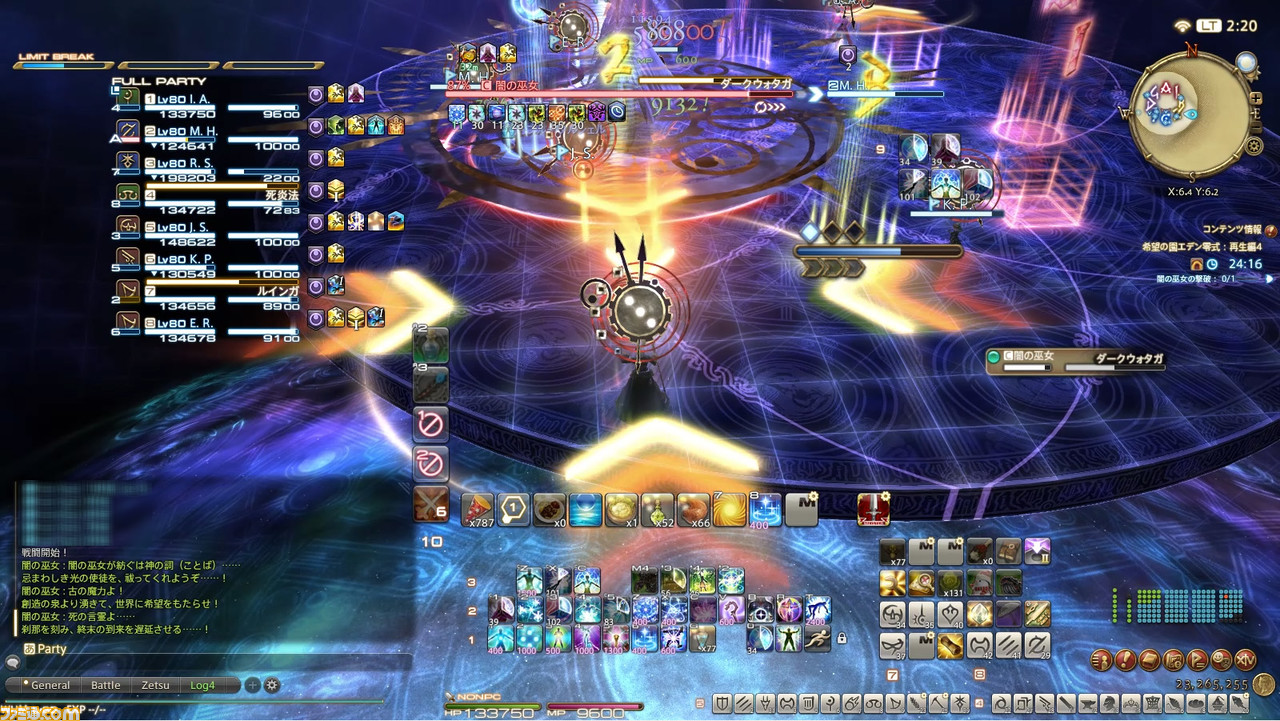
Alright, anyone, give me praise.
Everyone laughs hard
Was the usage of Spell-in-Waiting discussed during the initial development phase?
The Spell-in-Waiting was the element we felt we couldn’t leave out.
We thought, even if we don’t say a word about it, we knew it definitely will be used.
What kind of advice did Nakagawa-san give when it came to Spell-in-Waiting?
This time the task of implementation was left up to both Daisuke and Yoshihashi. However, they couldn’t come up with good ideas during the planning for the first half of the phases so we held a meeting to discuss ideas.
Both of them were worrying over whether the ideas thought up would be good to implement, and so I asked for the details about what they were working on.
It didn’t seem that the ideas they worked on were bad or anything, so I gave them the advice to just proceed with the ideas because it was good enough. That’s about it.
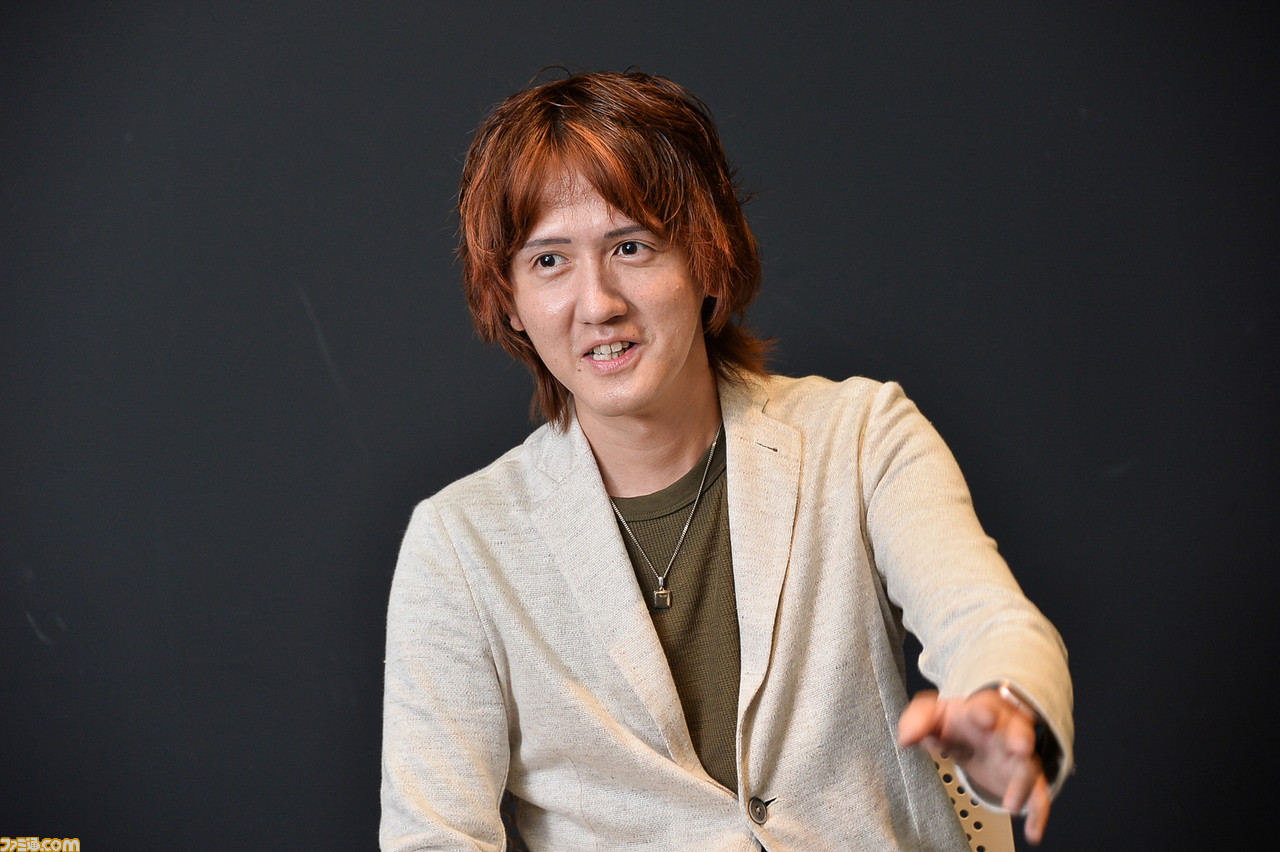
When you’re working while pushing yourself, it’s hard to know what is correct and what is not.
This is definitely a common problem amongst developers. (laughs)
Now, we have only one question regarding the second half of the battle.
The Relativity mechanic (in Japanese: Time Compression) is divided into 4 parts: Basic, Intermediate, Advanced, and Terminal (in Japanese 序 [Jo]、破 [Ha], 急 [Kyuu], and 終 [Shuu]).
I would like to know how the naming behind the mechanic came to mind.
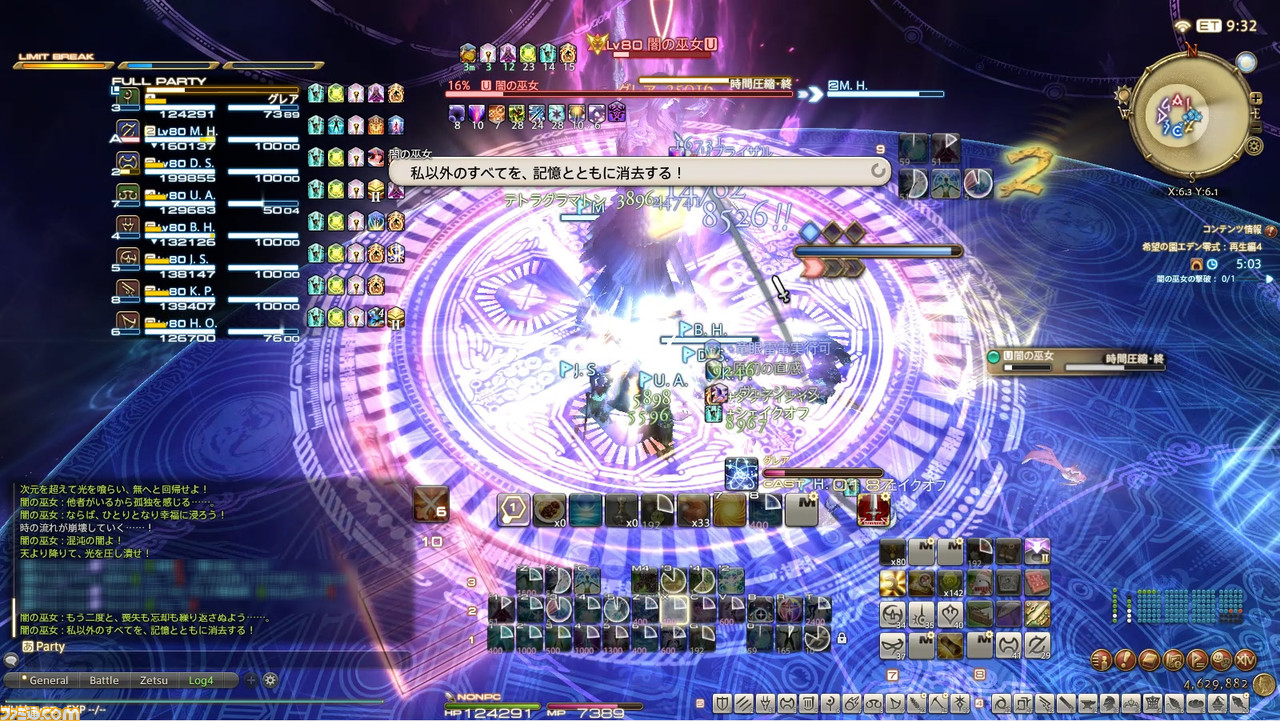
We gave the phases codenames A, B, C, and D during the development.
Initially we settled on 3 varieties, and we requested Oda decide on the names of those 3 variations. Then we received the answer from Oda that, since there are 3 variations, it’d be right to name it Jo (Basic), Ha (Intermediate), and Kyuu (Advanced).
After that we decided to have the fourth Relativity mechanic added into the battle and we had no idea what to name after “Advanced.”
We then received a message from Oda again saying “Since it’s the finality that wraps up the mechanic, I gave it the word “Terminal” (終, End)”.
Translator’s note: Read here to know what Jo, Ha, and Kyuu means
The Challenges Of Trying To Bring New Characters To Life
Though I’d like to hear a lot more, unfortunately we are running out of time for this interview, so I’d like to summarise the entire series. Looking back at the entire Eden series, how do you feel about it now?
Since the content and story of the Eden series centers around Gaia and Ryne, we gave great care to ensure it puts a spotlight on both characters from start to finish, as well as Eden itself. Looking back at it once again, that core aspect of the series is what allowed us to create it without hesitation.
From Eden’s Gate 2nd floor, we confronted Gaia, though we did not know her name at that time, as well as facing Ryne in Eden’s Verse 4th floor as a boss, where in normal mode, we’ve created a scene to illustrate Gaia saving Ryne. And then once again, we faced and confronted both the Promise of Eden and the Oracle of Darkness in Eden’s Promise 4th floor.
To those who actually went through the Eden series, I believe Gaia, Ryne and Eden have been through enough to leave a deep impression on the players.
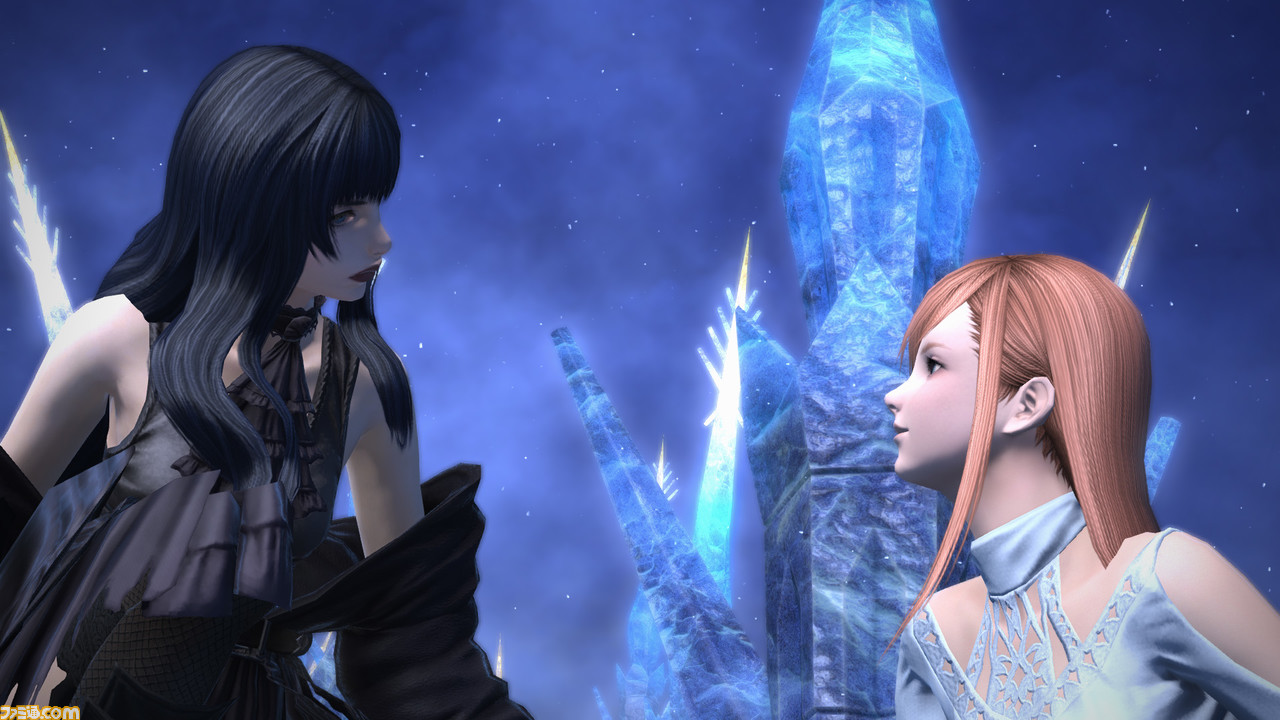
Not only the battle, but the arena itself really brings out that climax.
On the battle side of things, the Spell-in-Waiting seen in Eden’s Gate 2nd floor wasn’t created with consideration of the entire series, but instead being a part of the idea to express the characteristics of Gaia as a character at that time, as well as a method to make the battle content in Eden’s Gate 2nd floor interesting.
As a result, she would utilise that ability to control the rampant light seen in the cutscene in the normal version of Eden’s Verse 4th floor, and once again utilised the same mechanic in Eden’s Promise 4th floor.
Ultimately I think we’ve created a neat and beautiful connection throughout.
To think that the Spell-in-Waiting acted as a baton relay despite not being intended to be used to that extent and how it connected to scenarios and battles that came after, it’s kind of a touching story.
For the Omega series, our structure for that raid was to have boss appearances from FFV and FFVI, and conclude it using original bosses from FFXIV. But for the Eden series, our direction was structured to focus on Gaia and Ryne, which are original characters in FFXIV, while including elements that are reminiscent of FFVIII, and create our content revolving around these elements.
I think it was really great that we were able to bring Gaia to life throughout the series using those characteristics we introduced her with in Eden’s Gate.
Like the Omega series, it’s fun to create battles for FFXIV by using the bosses from past FF titles, and there are a lot of players who are fans of FF that find them attractive as well.
However, relying too heavily on bosses from other titles will eventually run us out of material, and could ignore the voices of players who look forward to original bosses in FFXIV as well.
Therefore, I believe that to be able to create the Eden series while using elements of FFVIII to its absolute minimum was indeed difficult but ultimately a good thing in the end.
Unlike the bosses from past titles who already have their own background, there is also the difficulty of expressing the originality of the boss, isn’t there?
For raid content, the story volume is not as large as the main scenario during a single patch, so it was very difficult to create impactful characters appearing in the story for the first time that can leave a long lasting impression on everyone.
So, taking that into consideration, I’m relieved that we were able to successfully implement and complete this series this time.
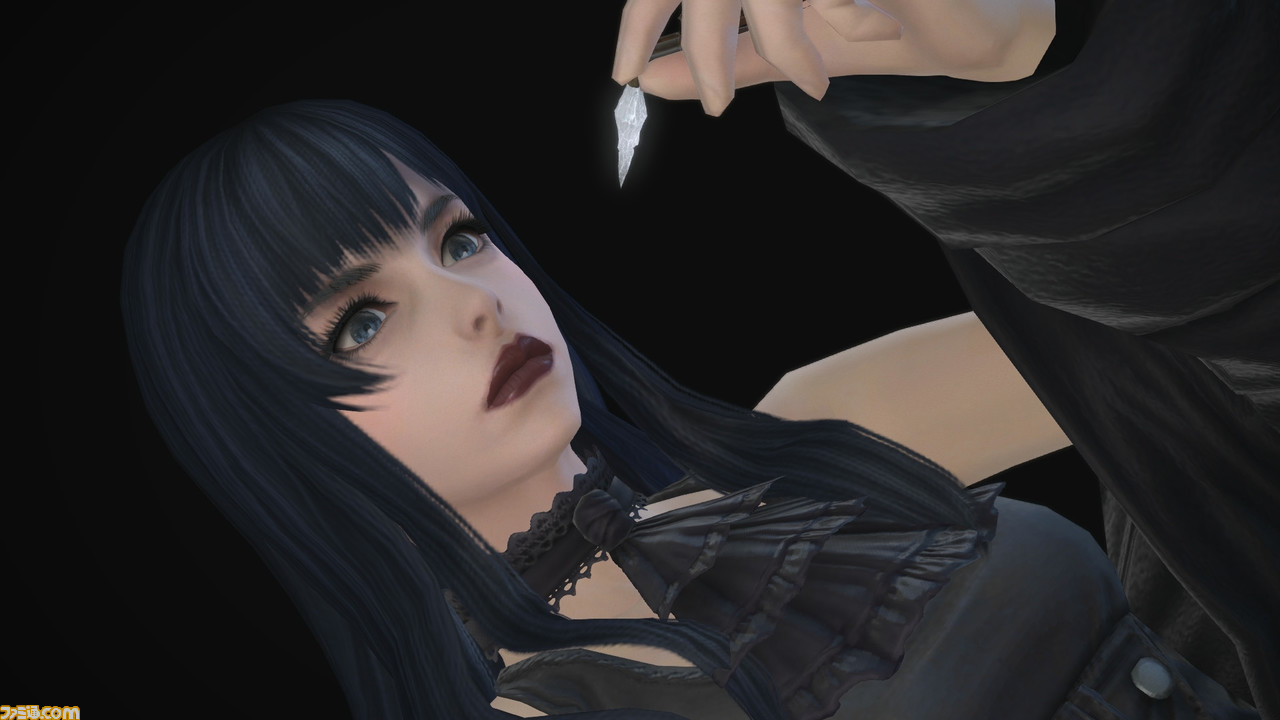
I’m sure that it’s not only the scenario that’s etched into players’ memories, but also the encounters as well.
Considering the game is about to enter its ninth year of operation, it’s easy to imagine how hard it is to implement new raids that bring surprises that are impactful and fresh, as well as game balance that brings a huge sense of achievement.
After the release of Eden’s Gate and Eden’s Verse, we’ve received a lot more feedback compared to the raid tiers we had before. I think this is due to the considerable increase in players who started raiding compared to those that did back during the Omega series.
For Eden’s Promise, we spent a lot of time discussing the feedback within the development team, and reflected that feedback into the planning and development. I believe that the quality of Eden’s Promise is the result of this process.
Despite this, we know we shouldn’t just be satisfied with what we have achieved, but aim higher coming into 6.0 to create even better content than before! This is the passion we have in mind and we have many staff members hard at work to achieve this.
When we receive interviews like this, people tend to think that everything is decided at the discretion of a single person in charge of Battle Content, but actually there are many more people involved in raid development, and we are just speaking on behalf of the other staff members who are not present here today.
It is through discussions and collaboration that we are able to create interesting content like this.
Lastly before we end the interview, I would like to hear all of the member’s enthusiasm in content creation for FFXIV, as well as your message to all the players of the game.
I do want to keep creating new and varied battle content in the future.
As FFXIV continues, in order to provide new experiences and memories, as well as continuously bring surprise to the players through further refinement and trial-and-error, I want to create content that leaves a strong impression on players.
I think being able to listen to players’ feedback in real time, and to integrate that feedback is one of the great things about FFXIV.
By continuing to look through players’ feedback, and then further improving my own ideas, I want to be able to provide an experience all players can enjoy.
As there will be more and more junior members in the Monster team creating new content in the future, as someone from the Battle System, I hope to be able to create well balanced content, and work harder on the tuning.
I hope the players will keep on supporting us.
By confronting the fact that it’s a given that a battle has to be interesting, I want to keep thinking of mechanics that leave a strong impression, as well as make players feel good when they manage to find the solution.
I also want to create content that people can consider fun for FF content, which includes the characters that appear, the scenario, the BGM, effects and so on.
We’re moving forward with the development of raids for Endwalker right now as we speak, so I will let you know a little bit of what’s to come for the Pandæmonium raids.
I’m all ears!
We really have our hands full with development here… and the development for Pandæmonium raids is at the playtest stage right now.
The Pandæmonium series will be the first FFXIV original raid in a long time, and no bosses from the past FF titles will appear in the first tier of the raid.
On top of that, everyone involved is working in unison to create a raid that is really exciting and unique to “FFXIV.”
The bosses are also being designed by our FFXIV artists to be really cool and unique, so we hope players will look forward to it!
Closing Words From AkhMorning
We hope you really enjoyed the translated second half of “How Eden’s Promise Was Made!”.
Thus concludes the “How Eden’s Raids Were Made” series of interviews from Famitsu covering Shadowbringers raid design. That was quite a journey covering these insightful articles.
With the words from Nakagawa-san, we’re very much looking forward to the future content and improvements that Endwalker holds. If there are any further interviews for Pandæmonium, you can be sure to see them covered here!
As always a big thank you to Iluna and to our newest additions Chiela and Pind for working so diligently on the article.
Let us know what you think about this segment in the comments below.


